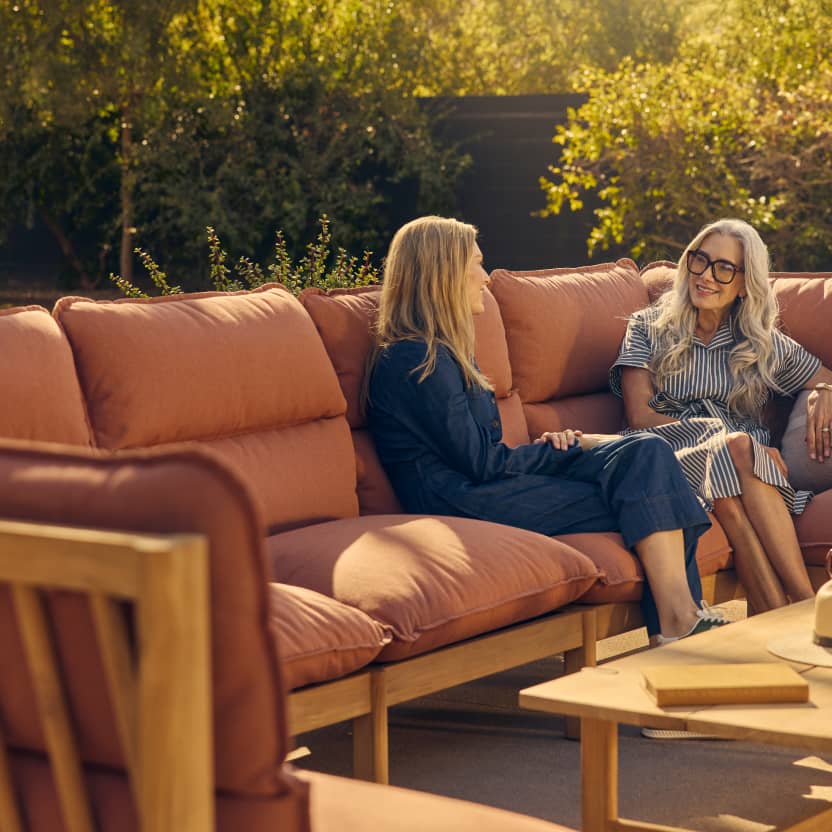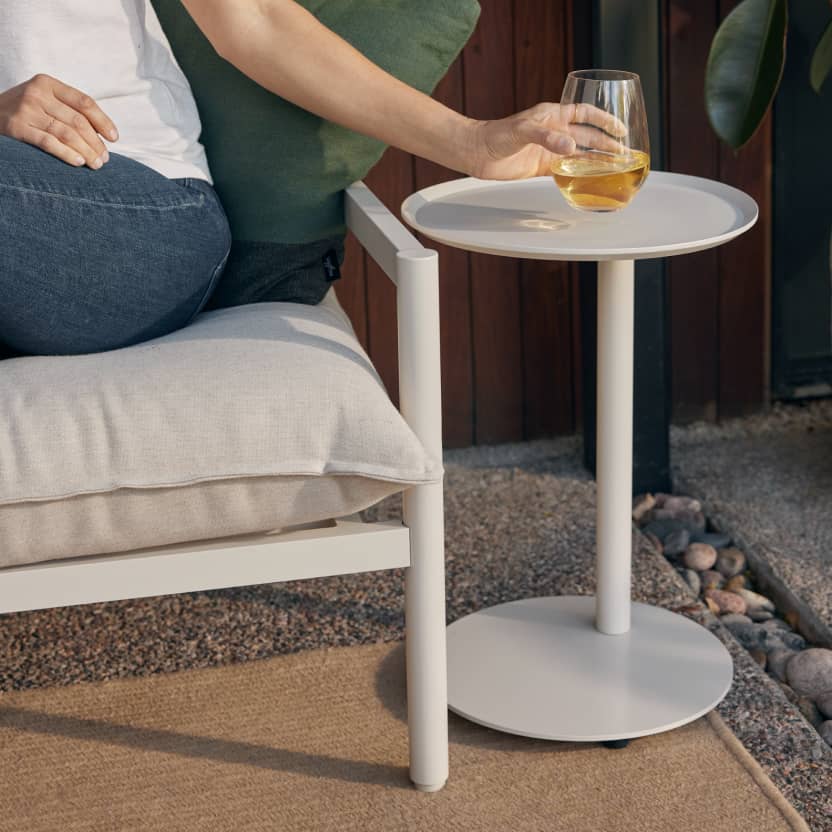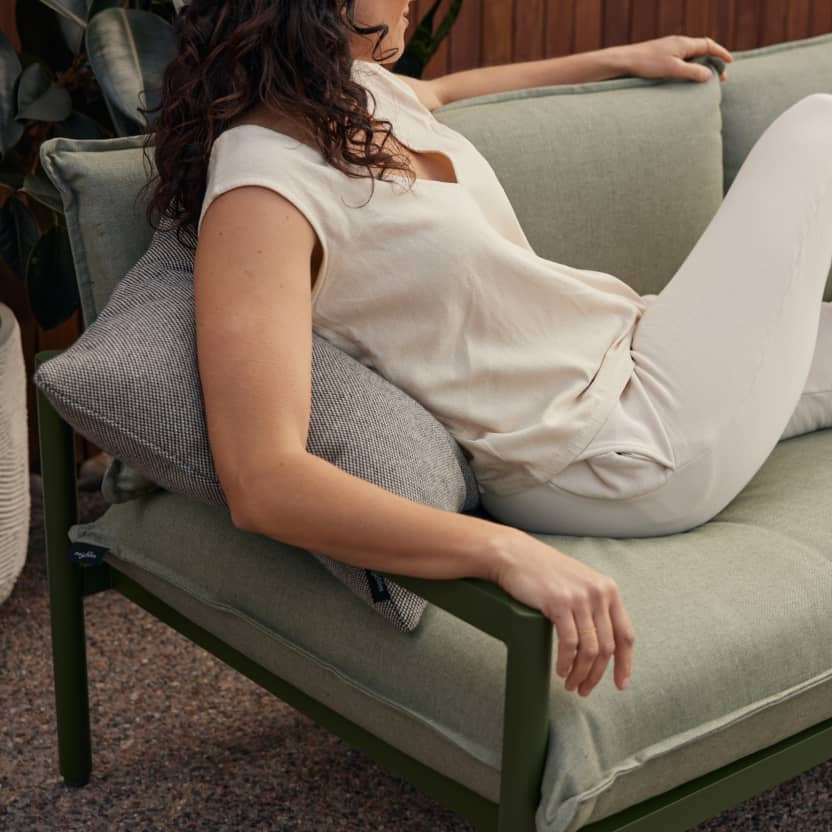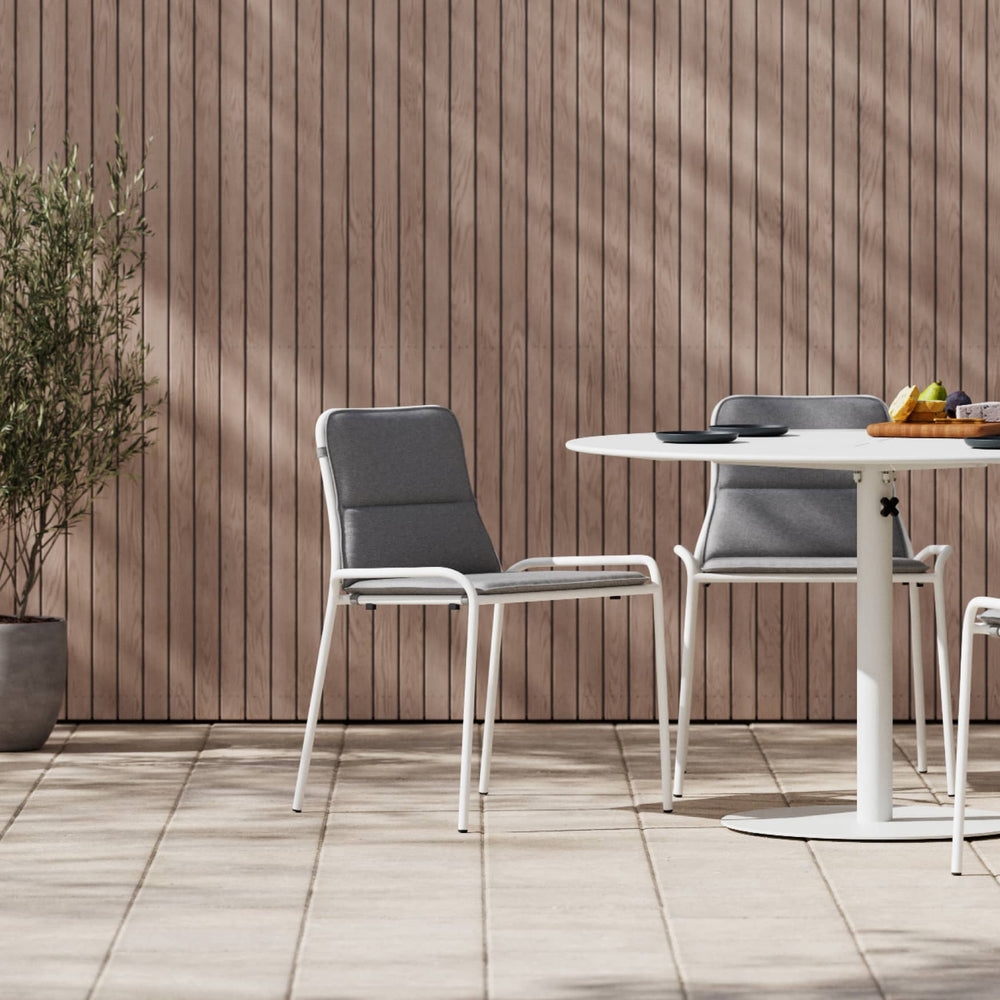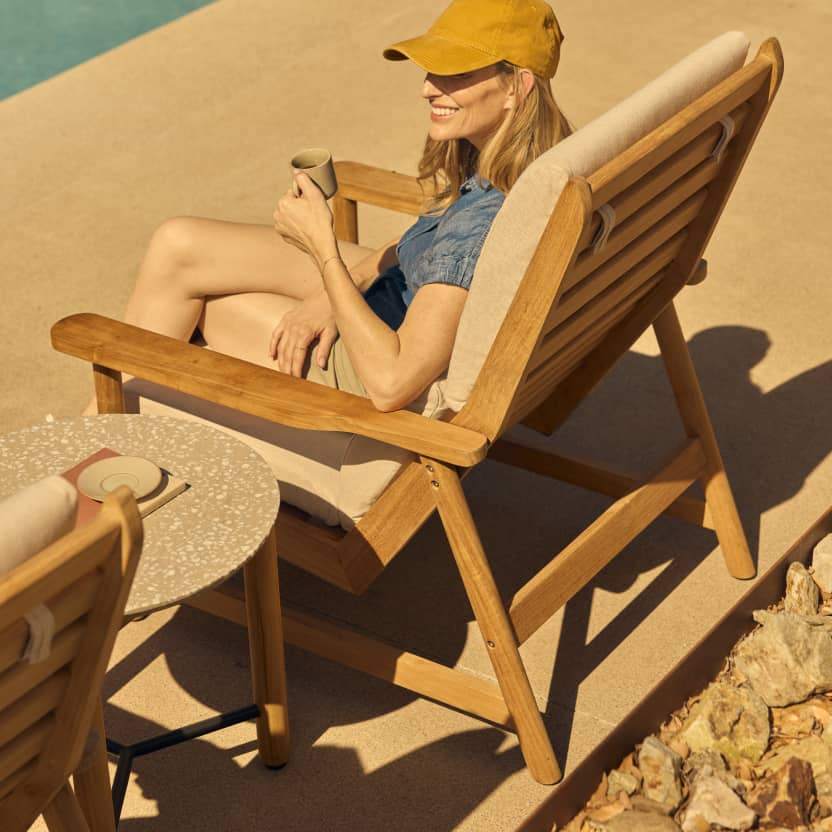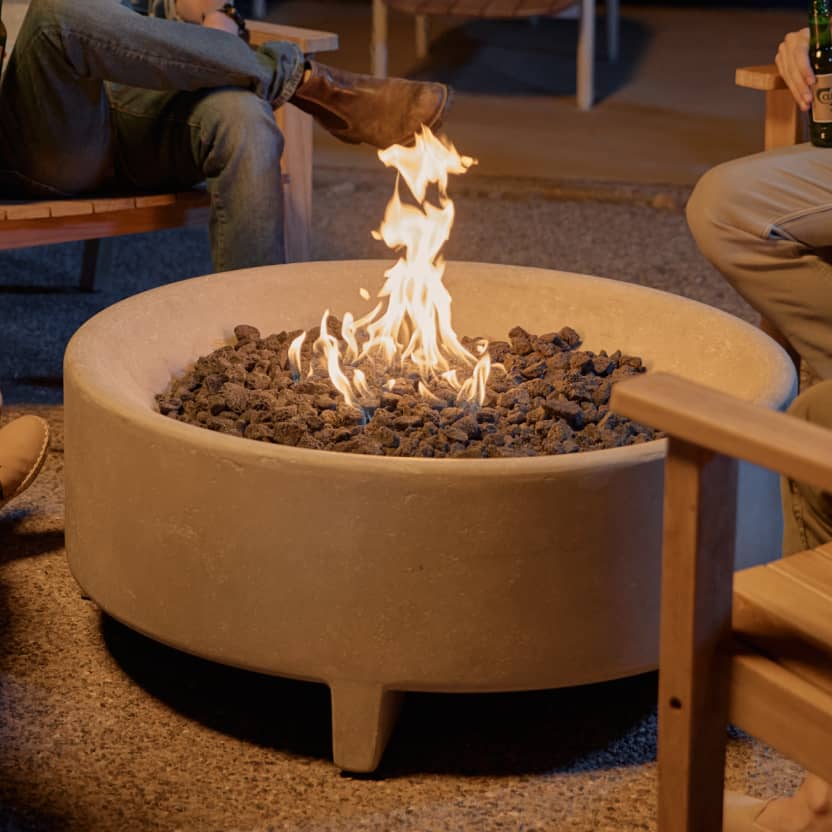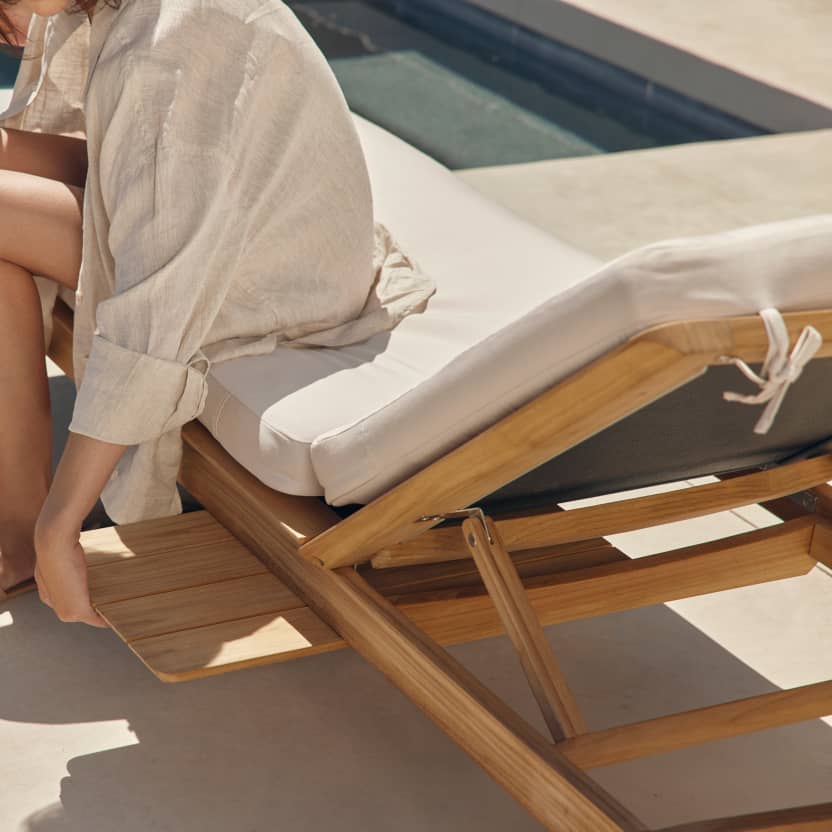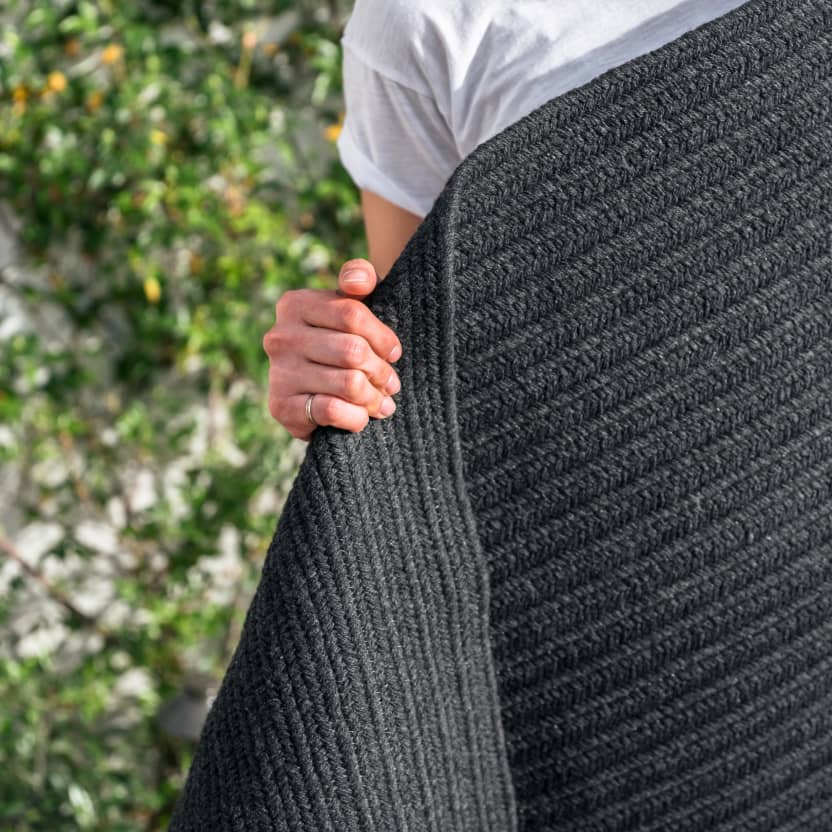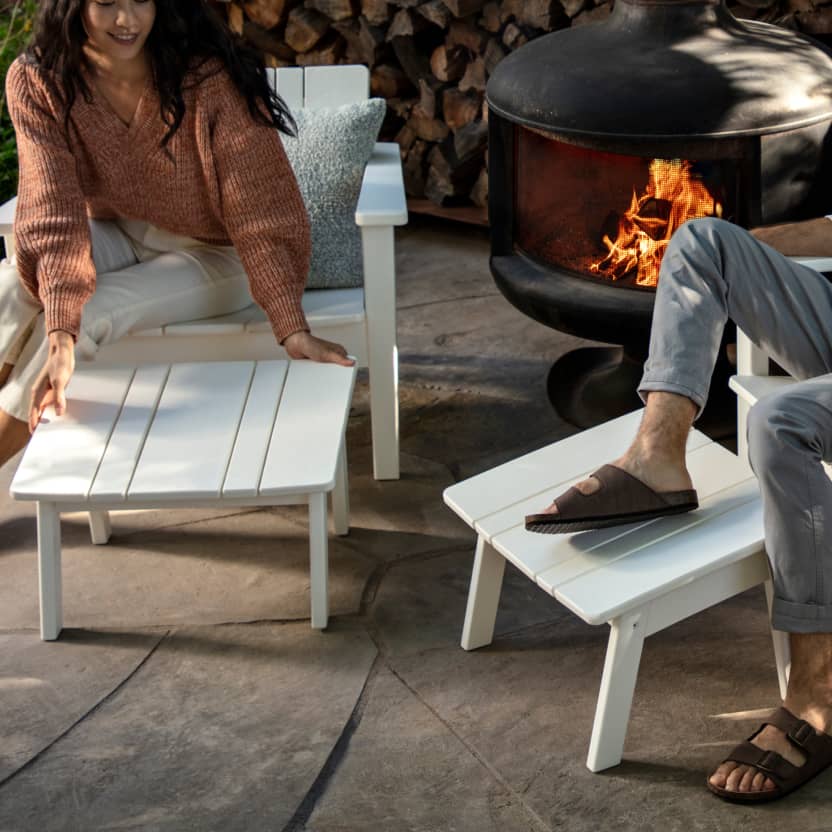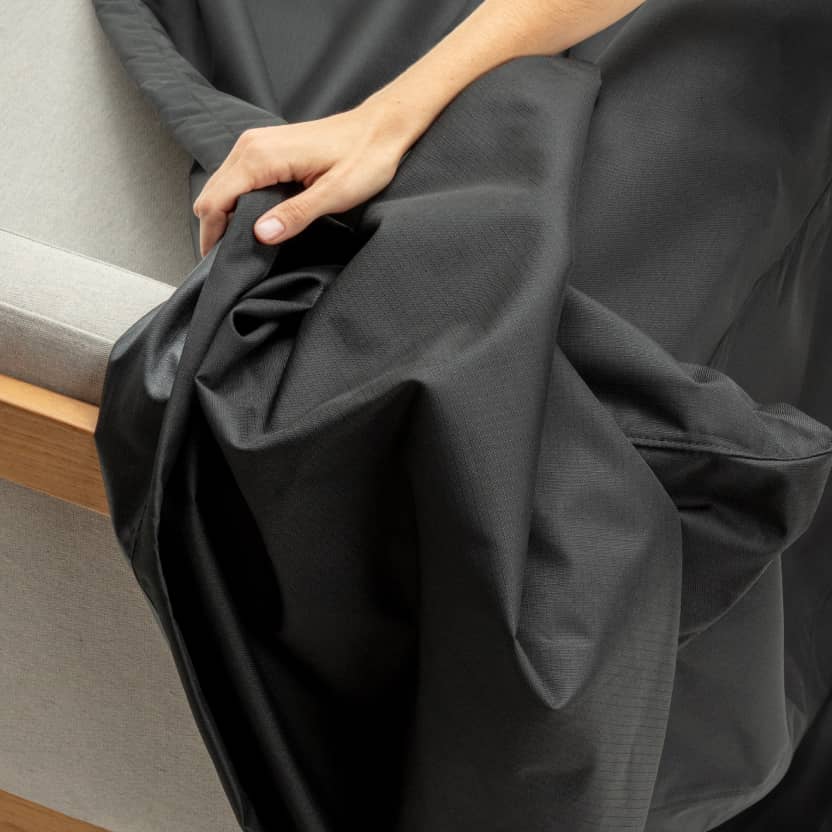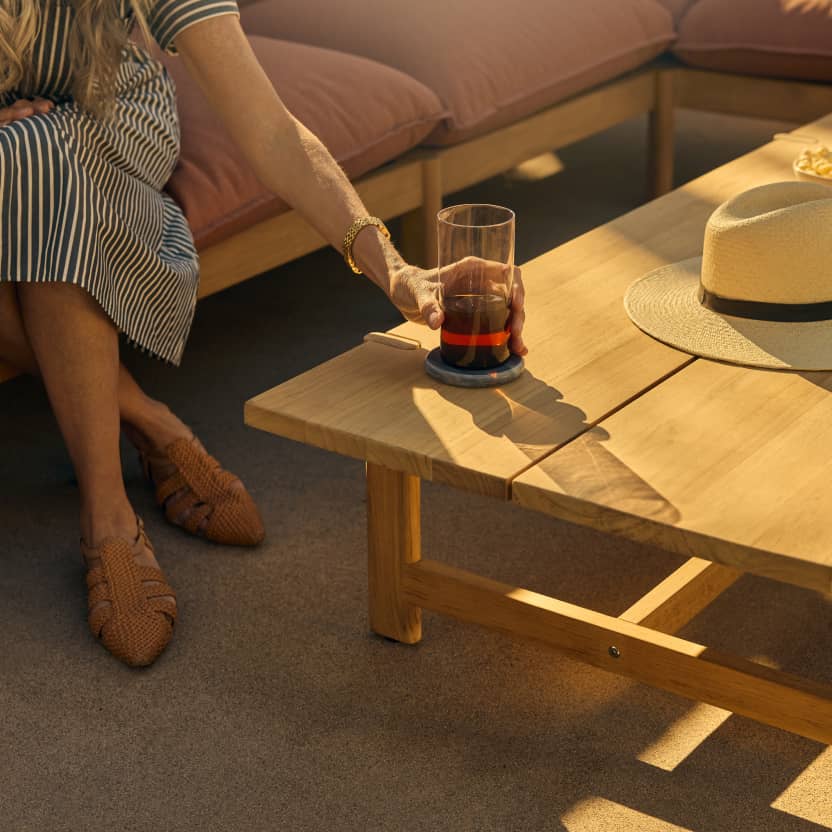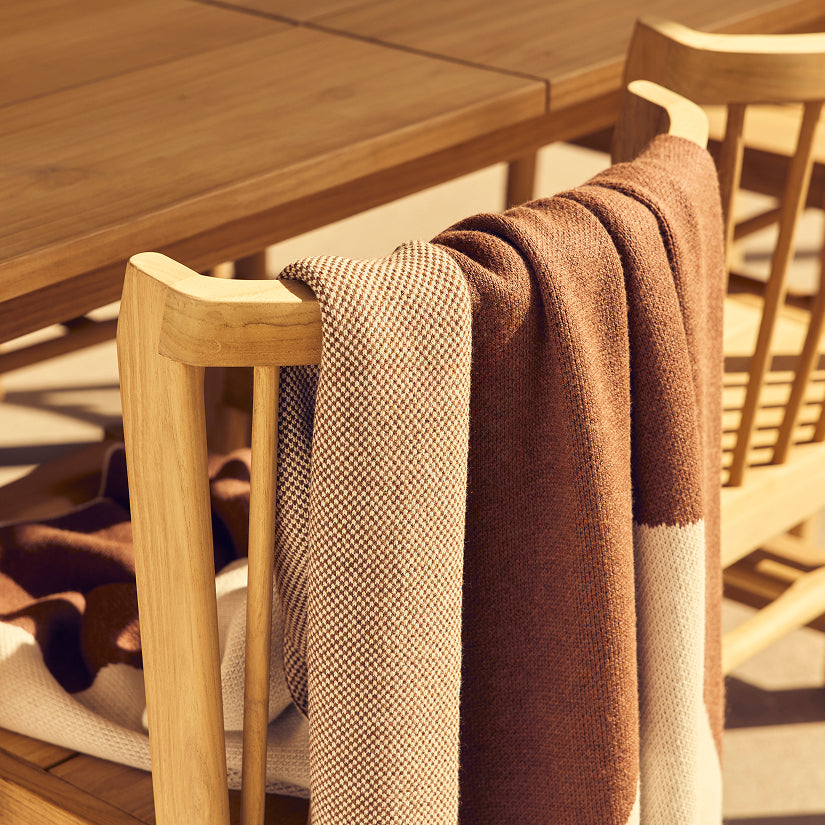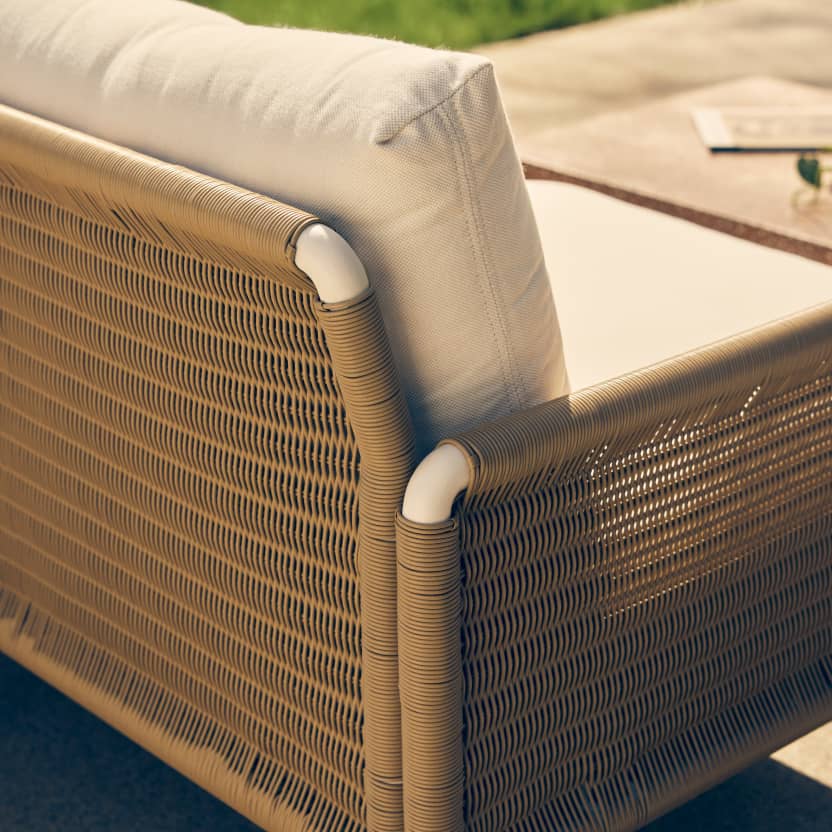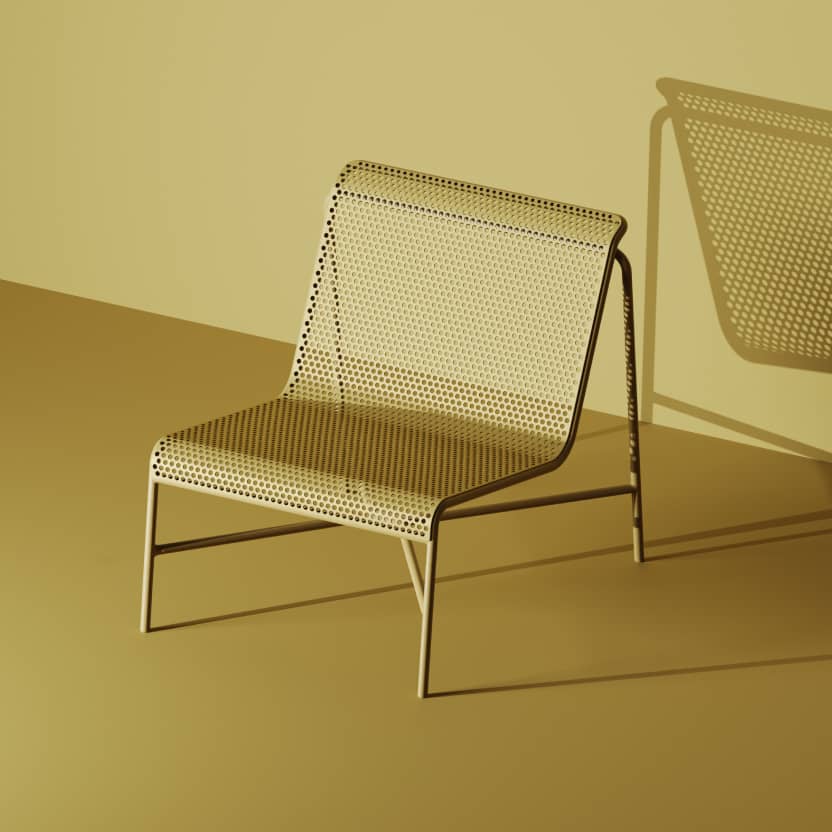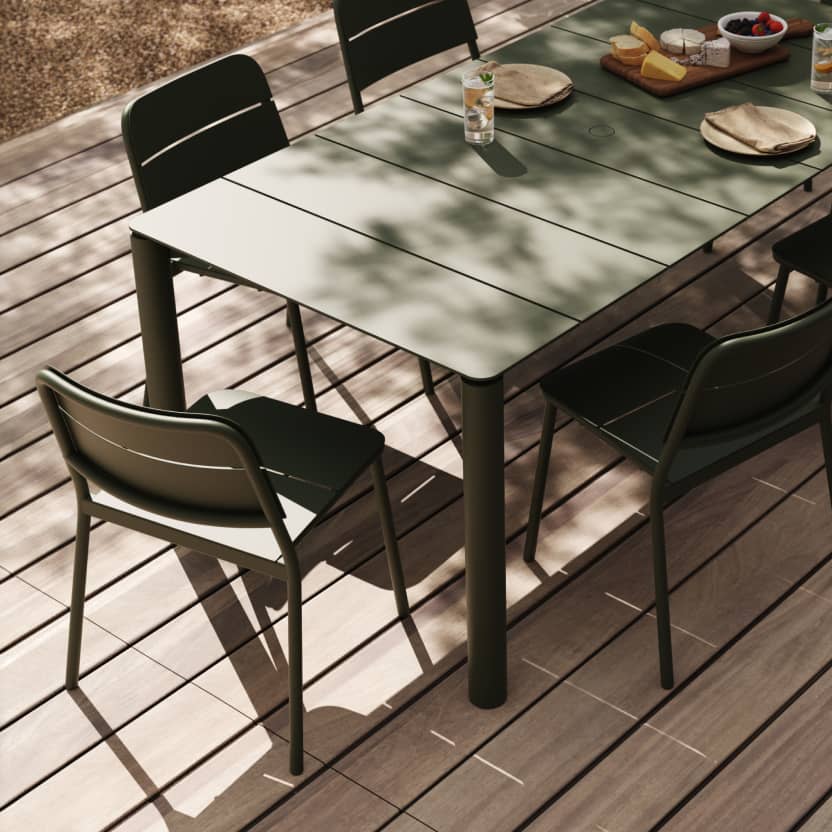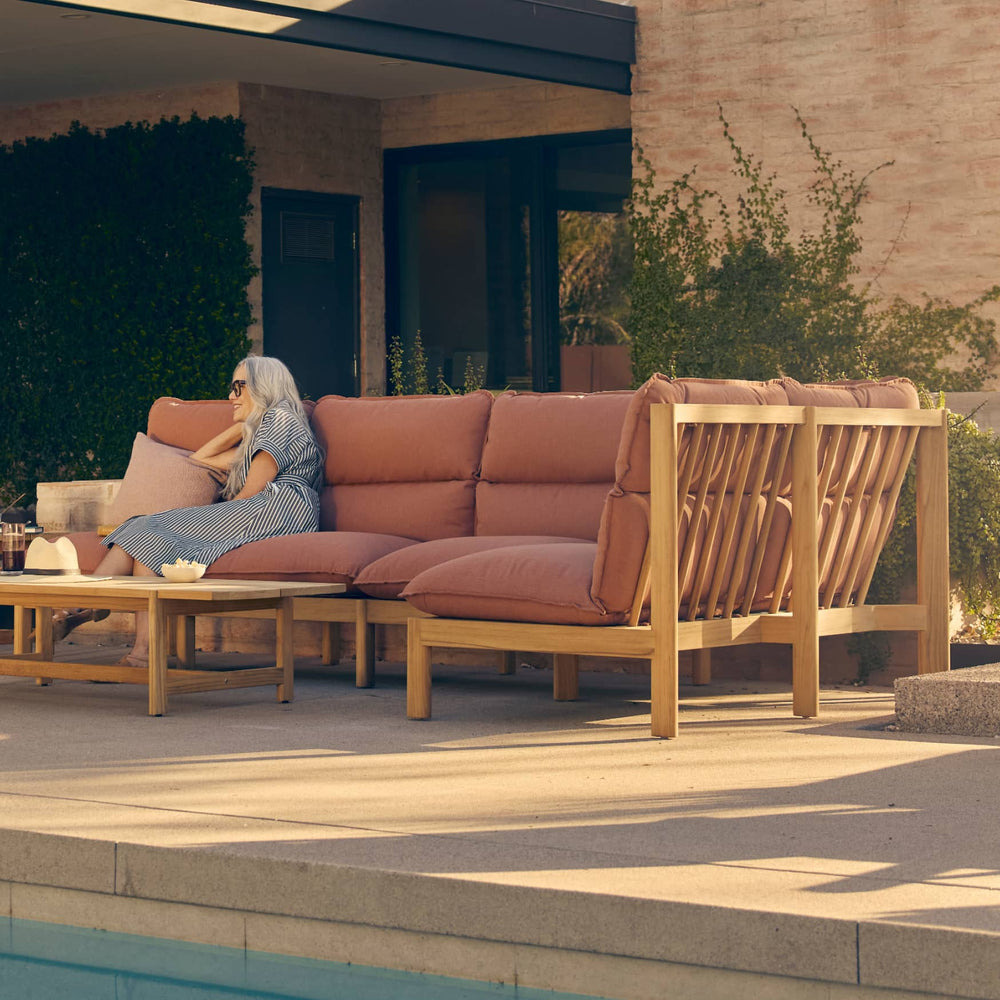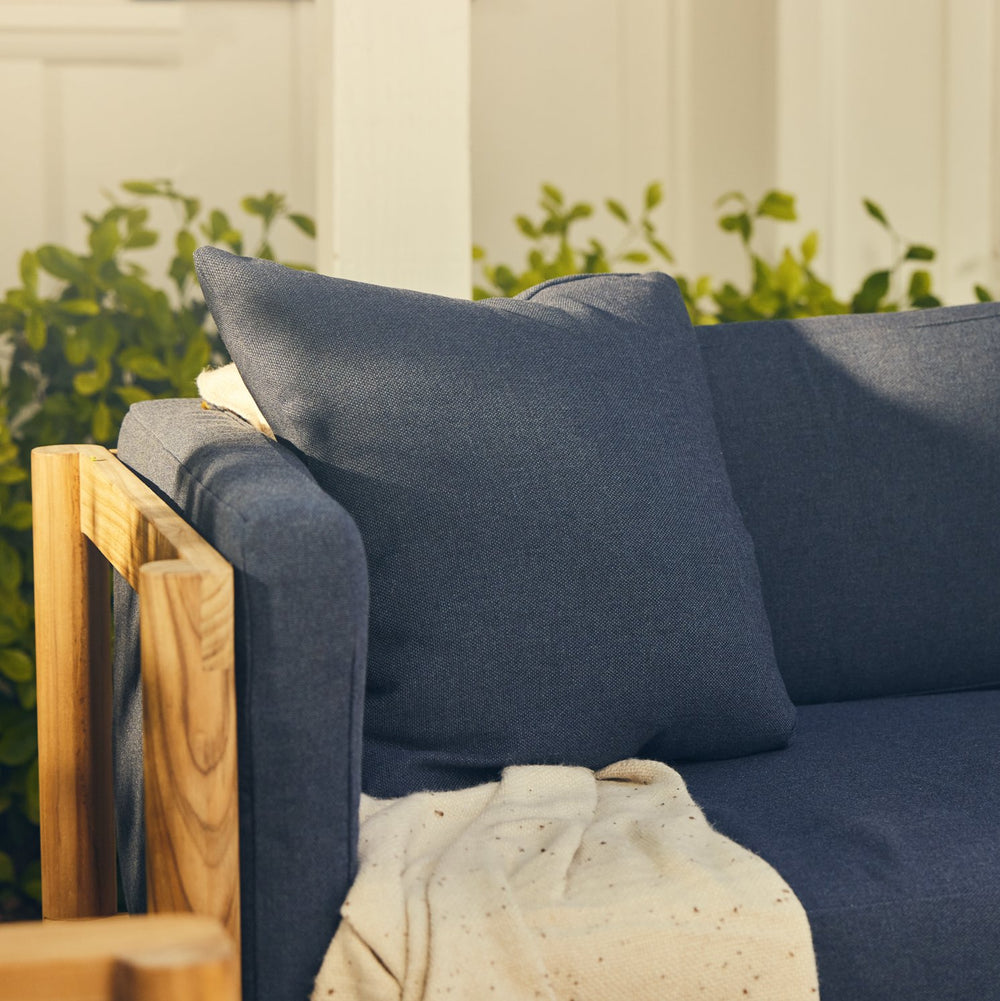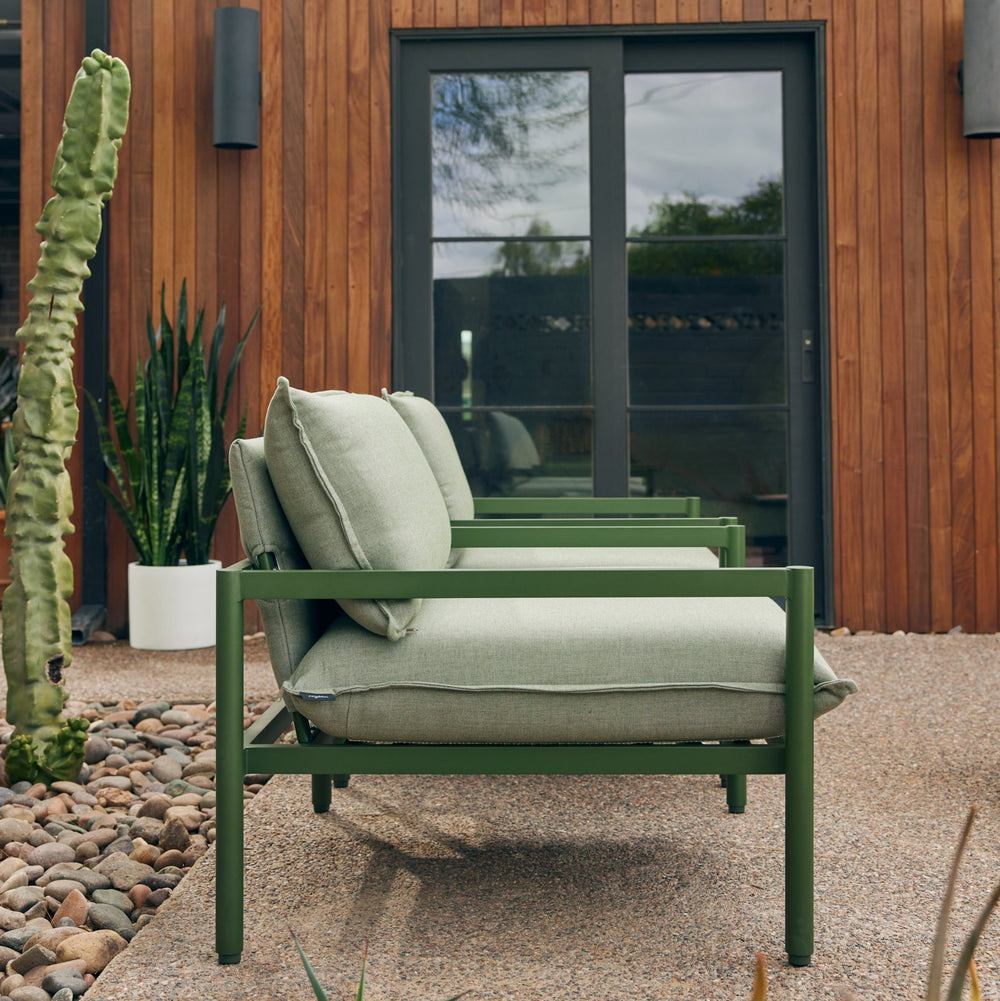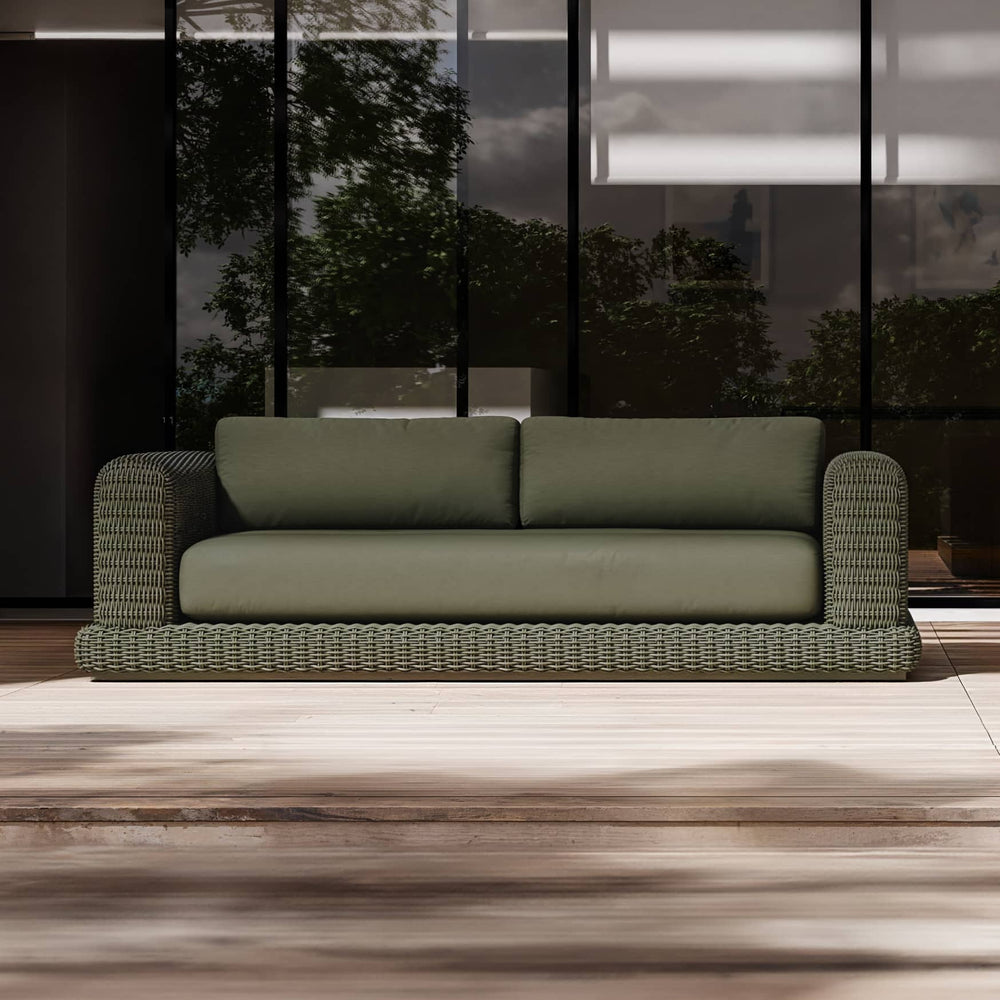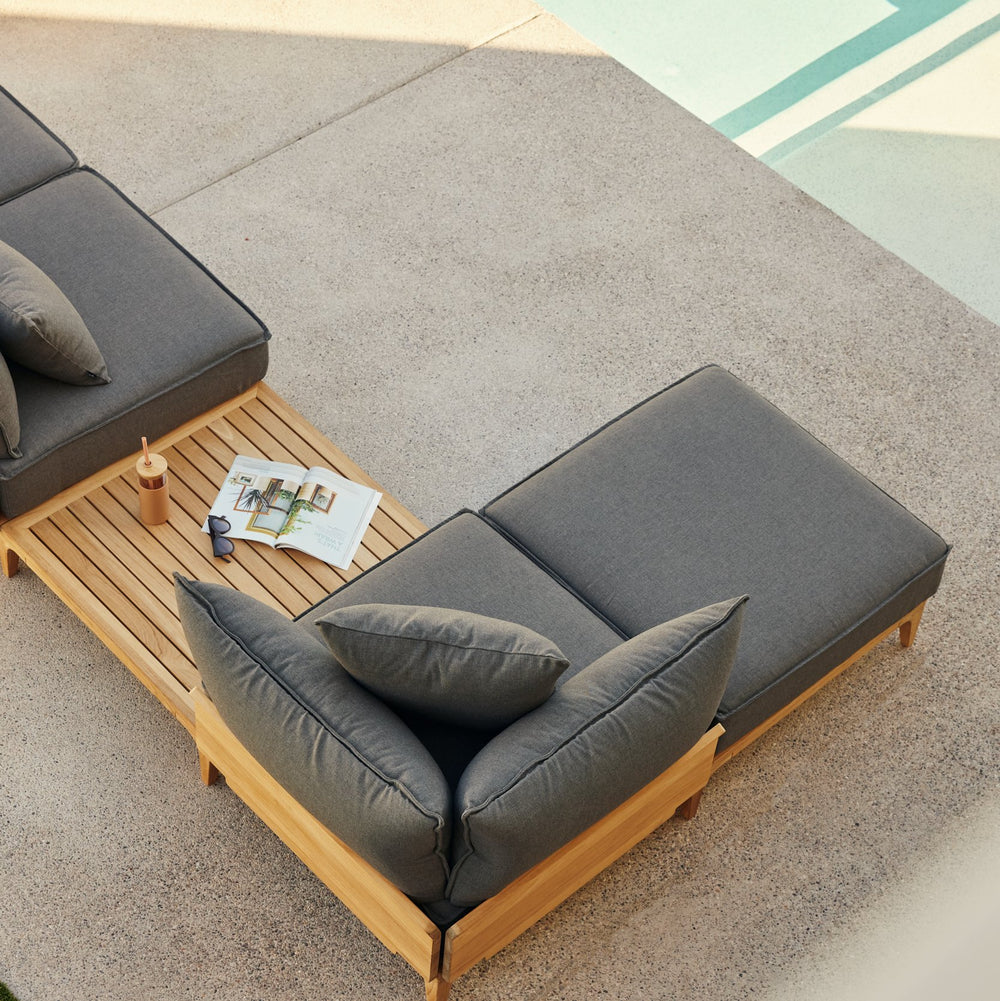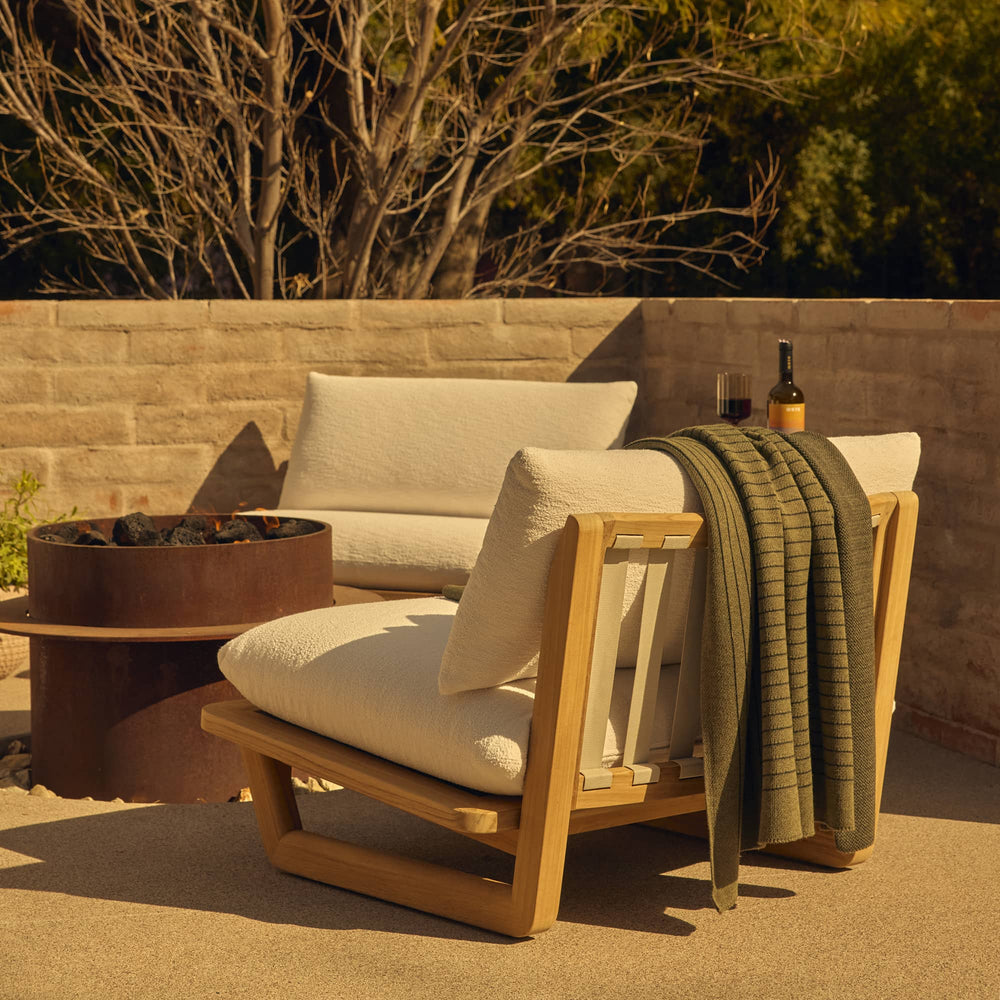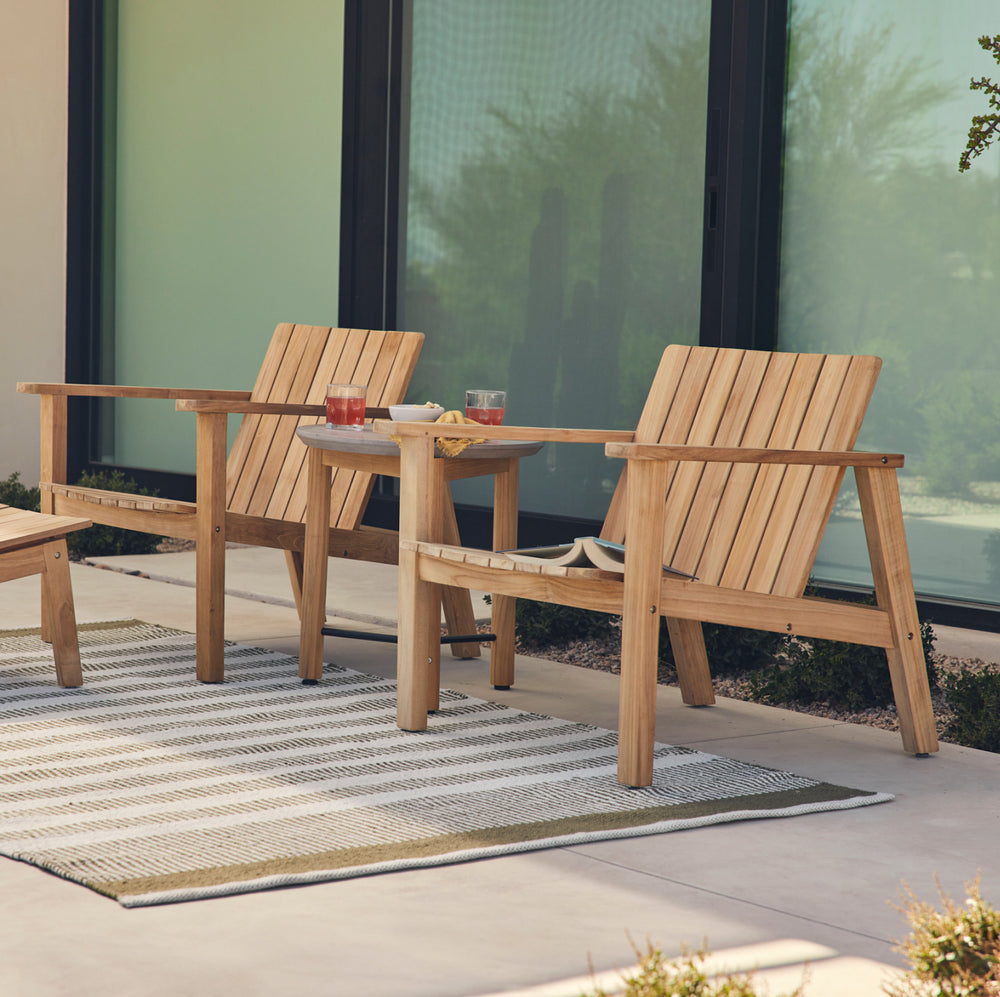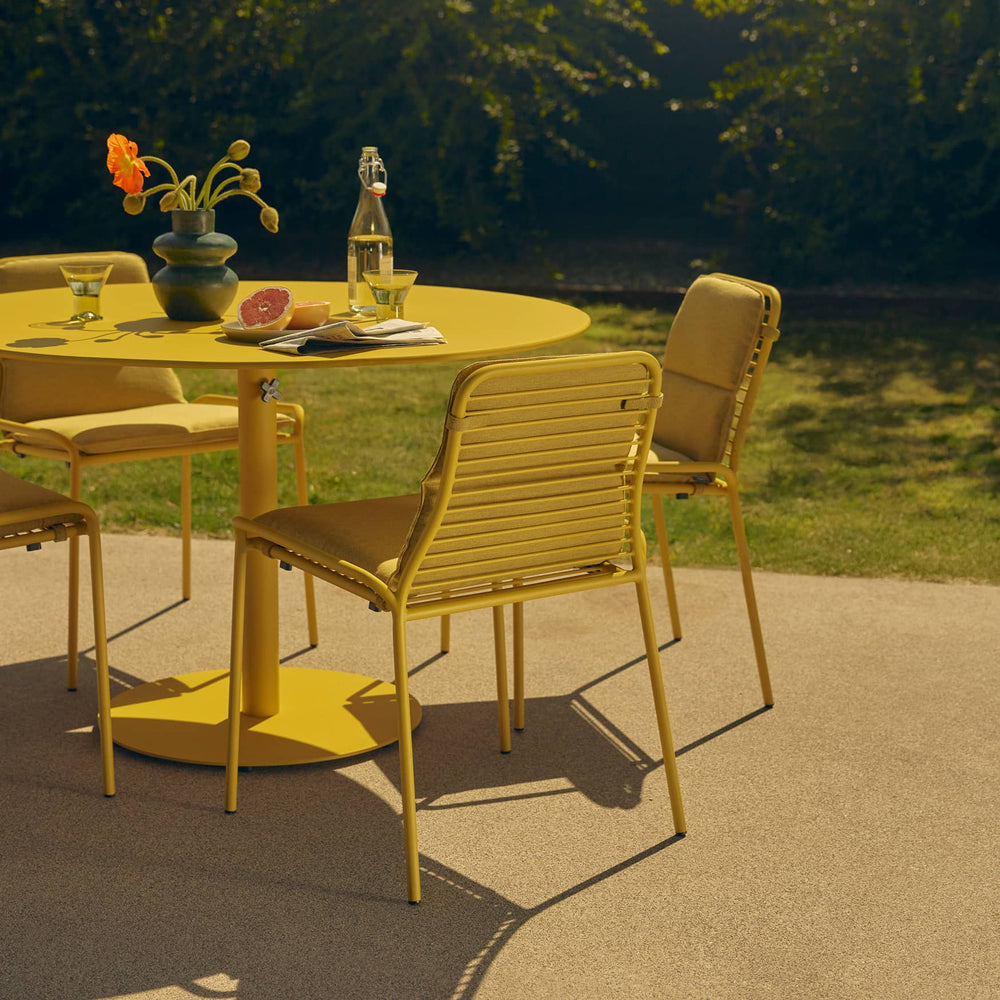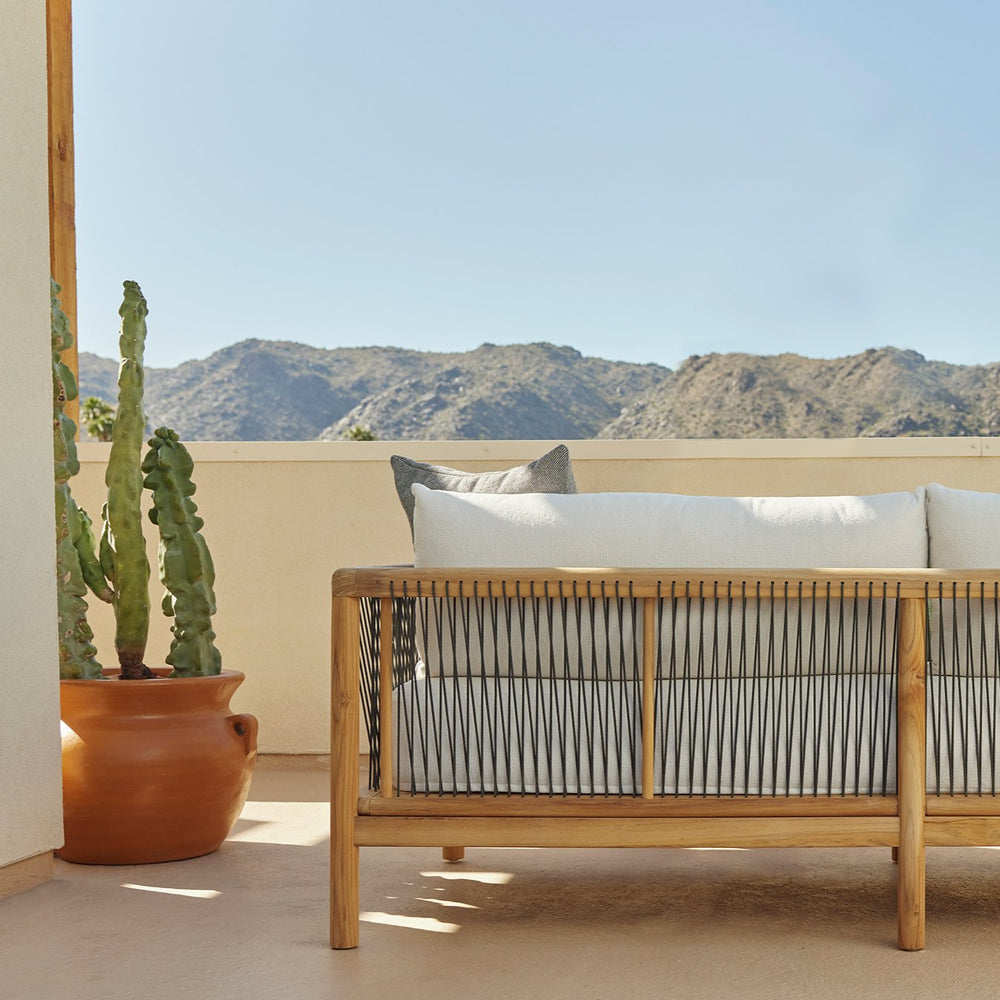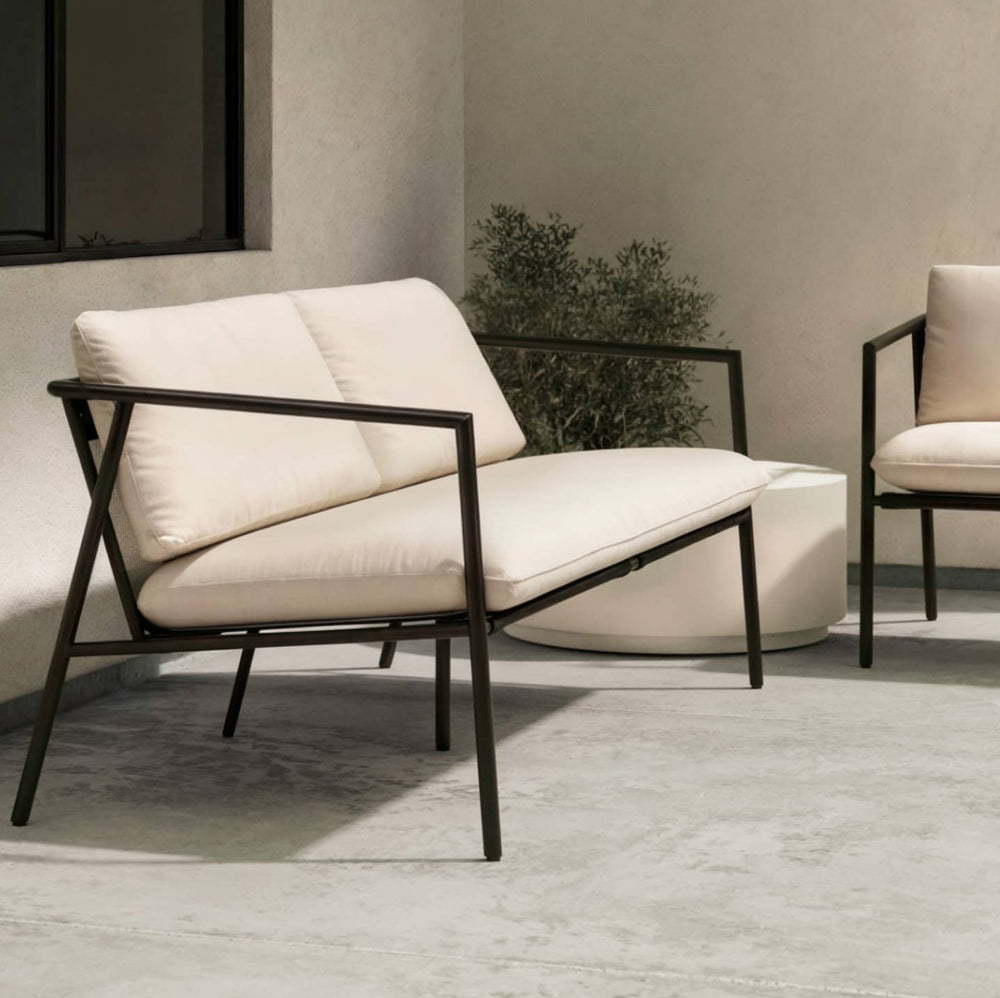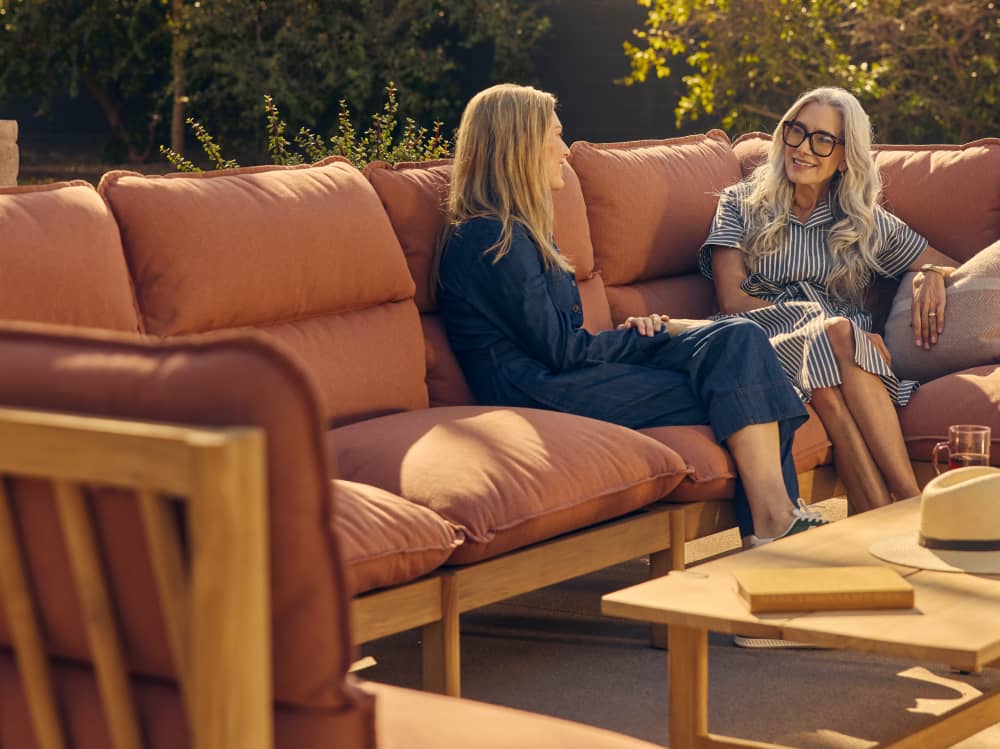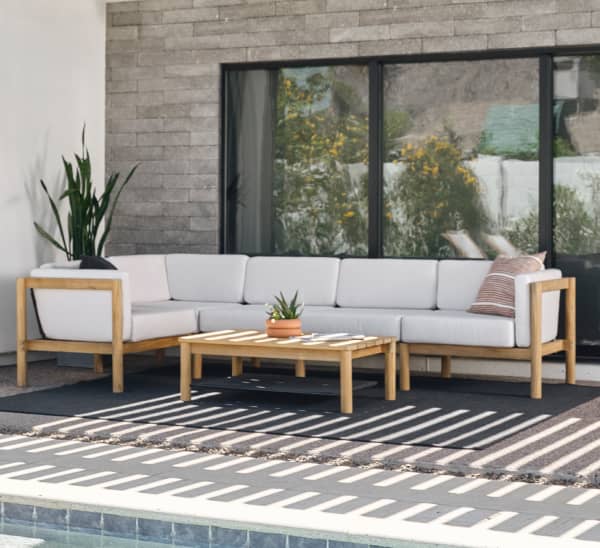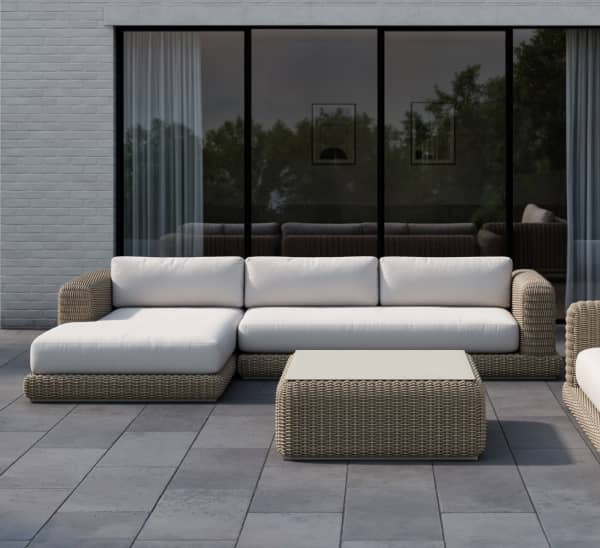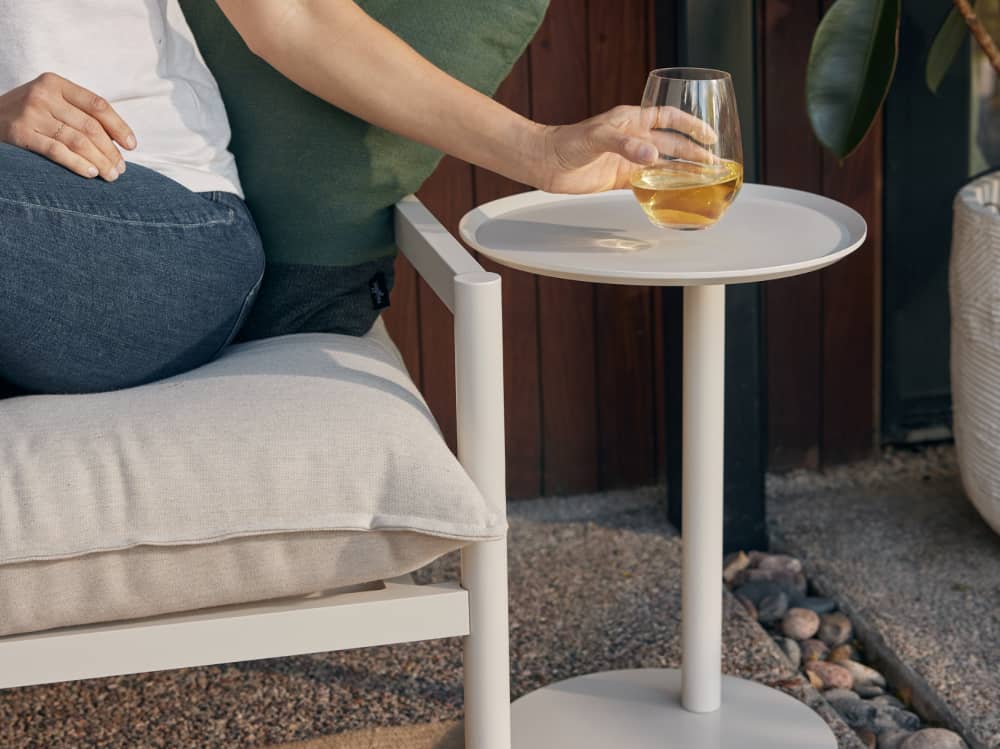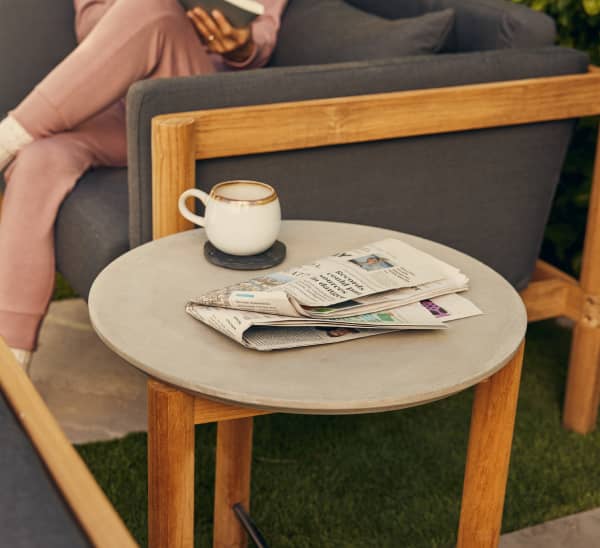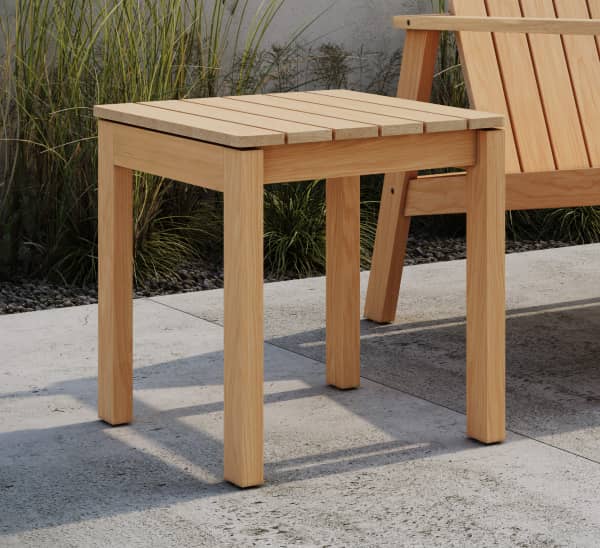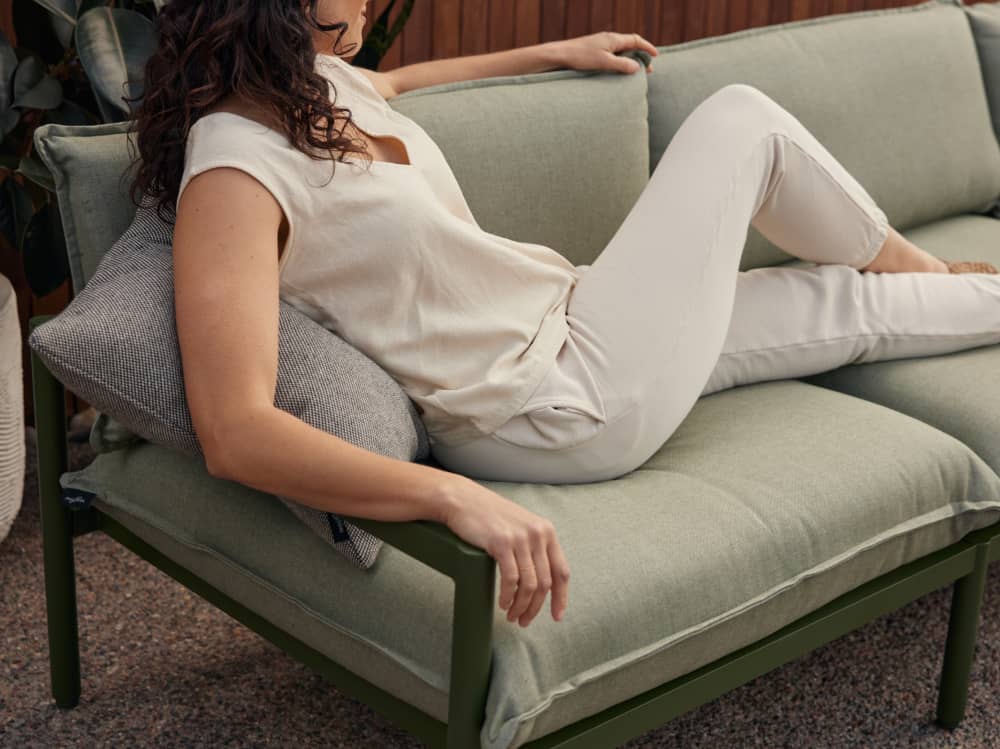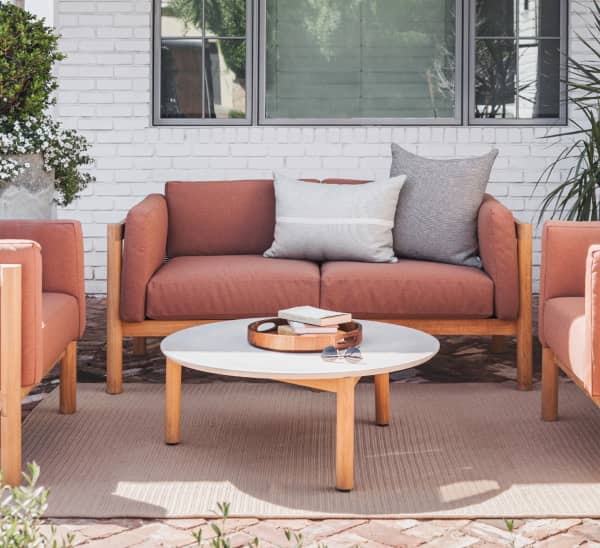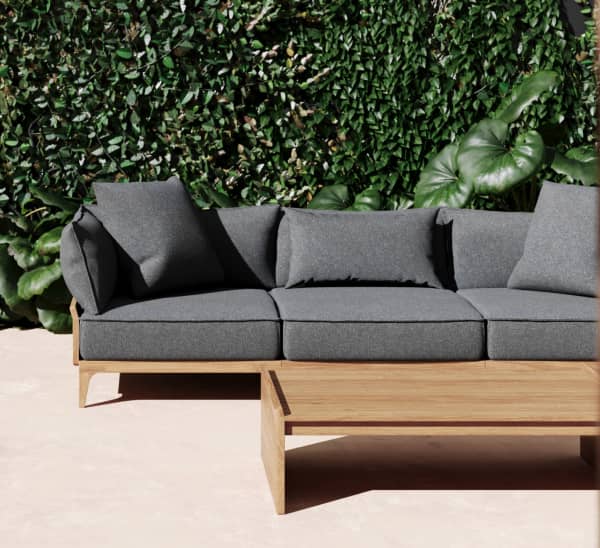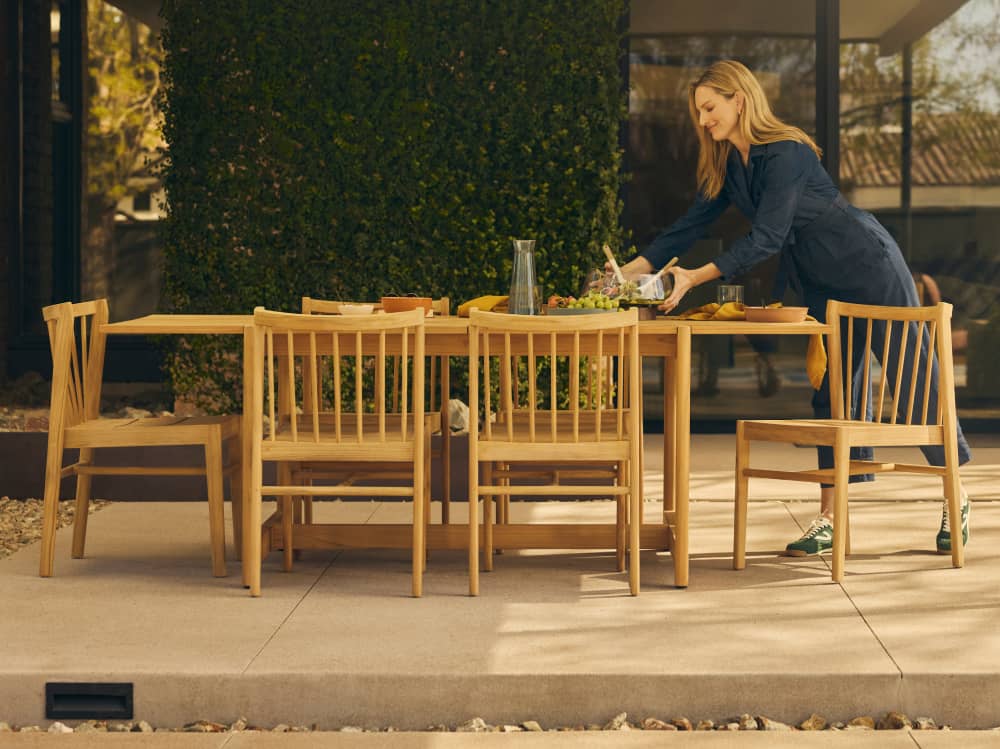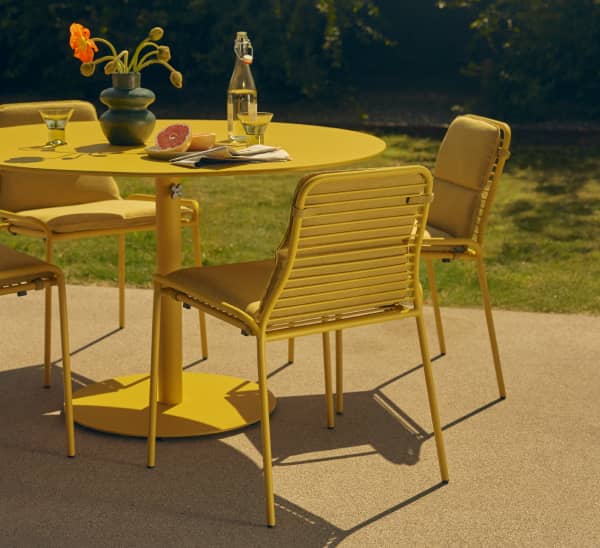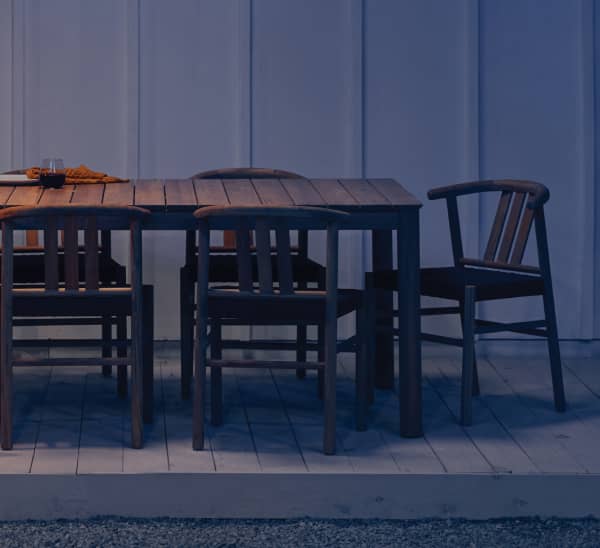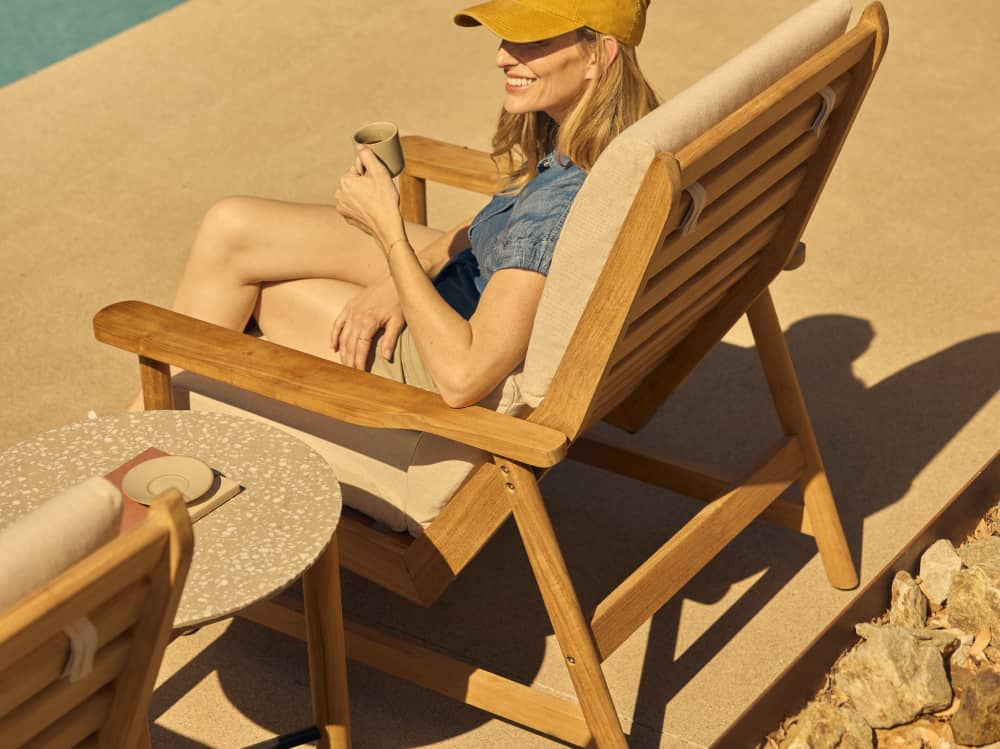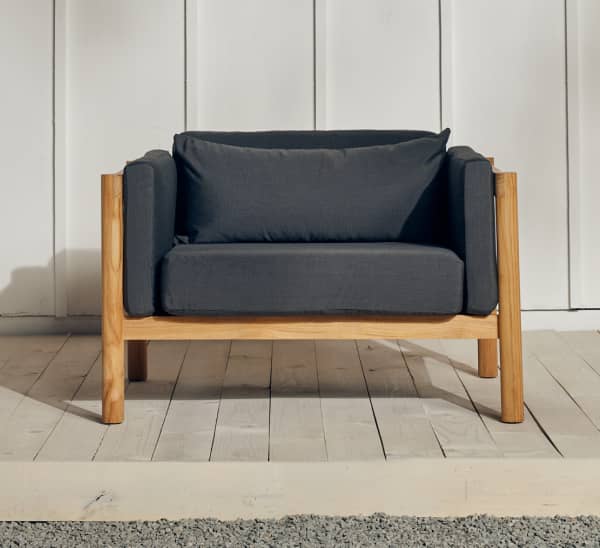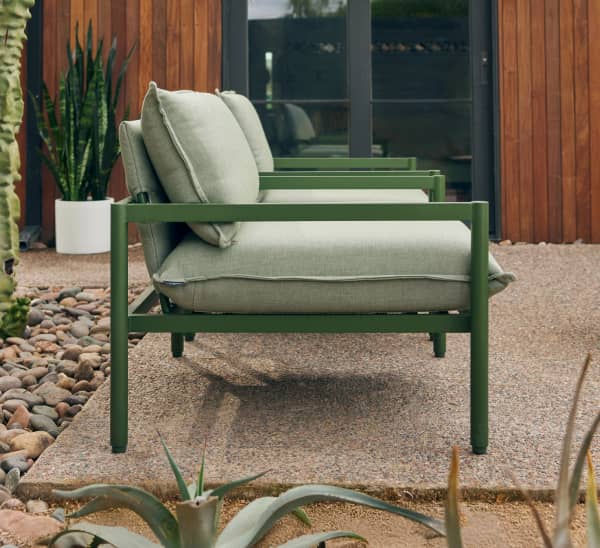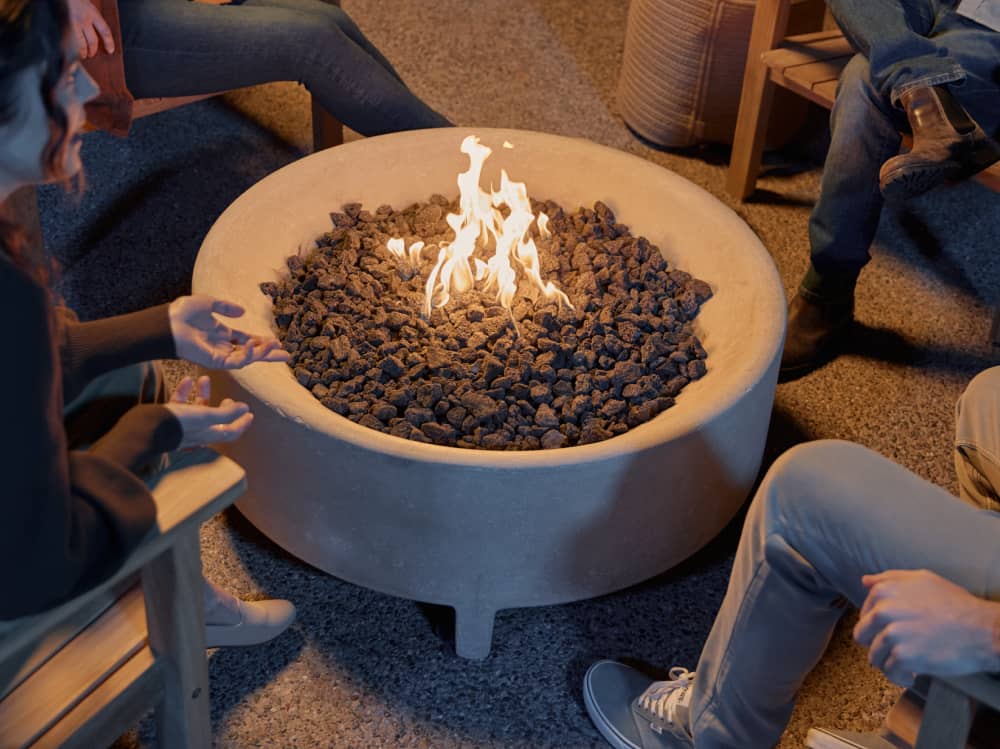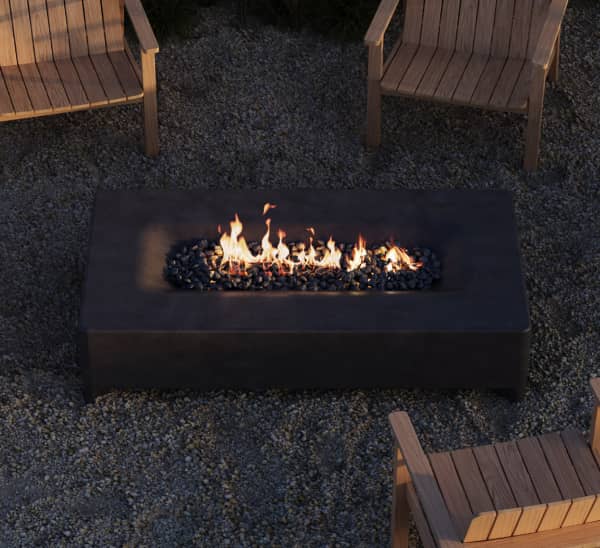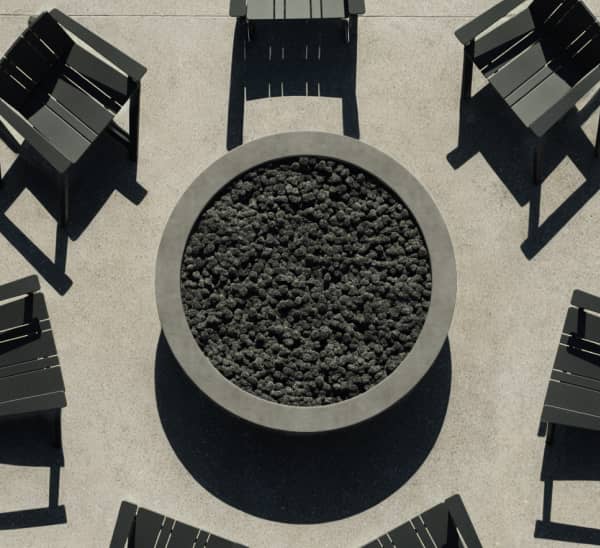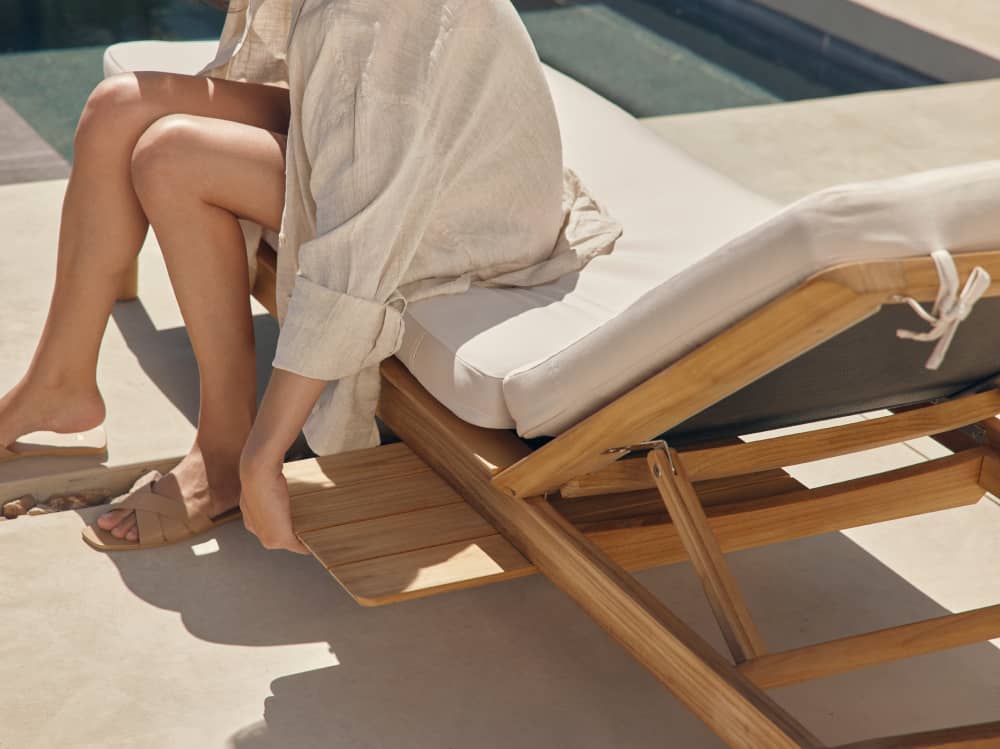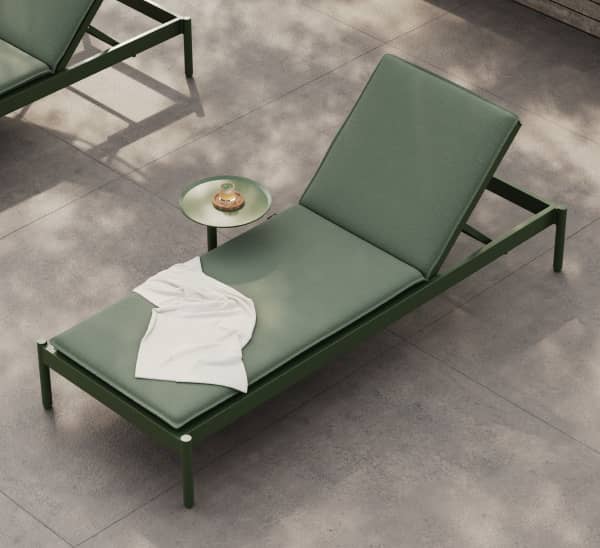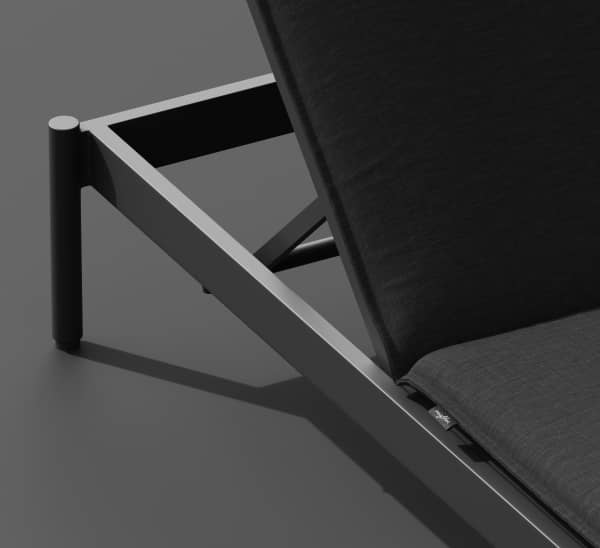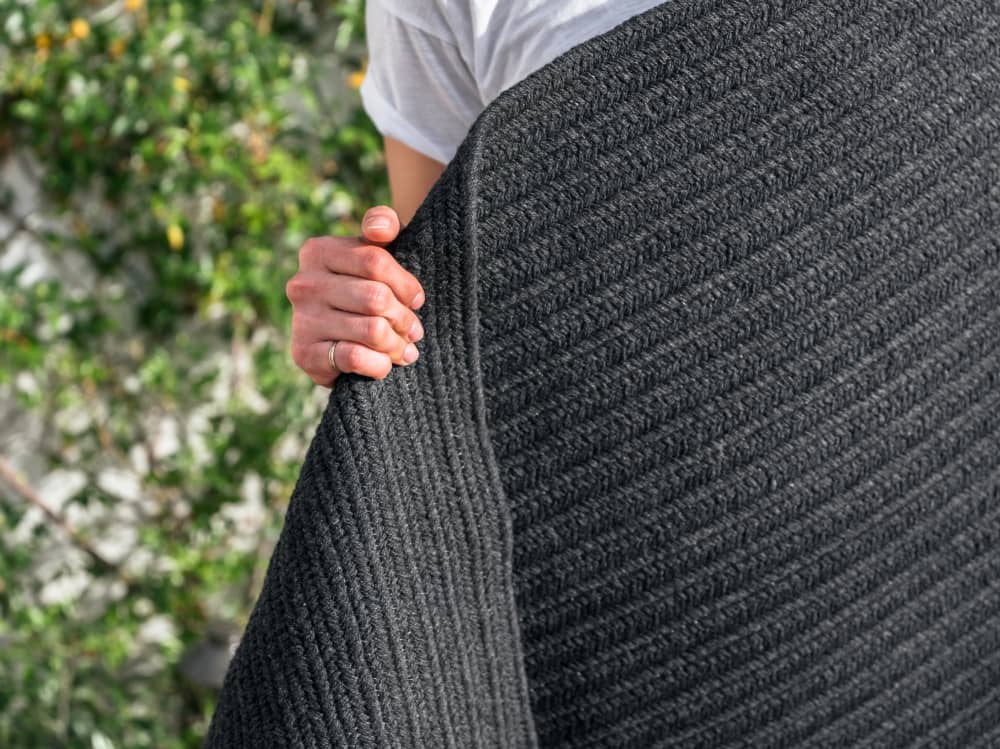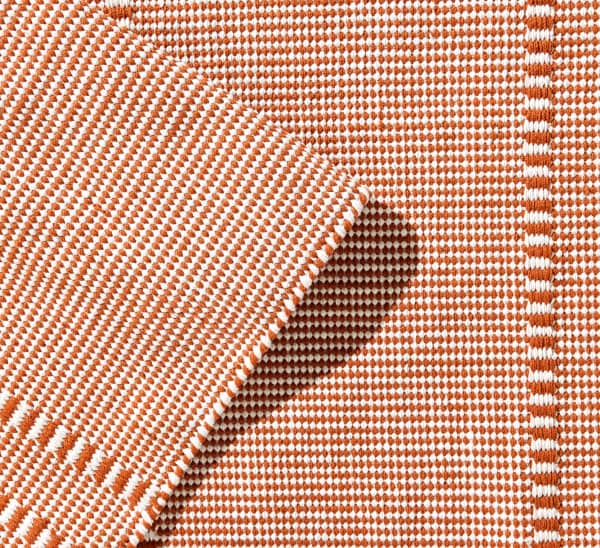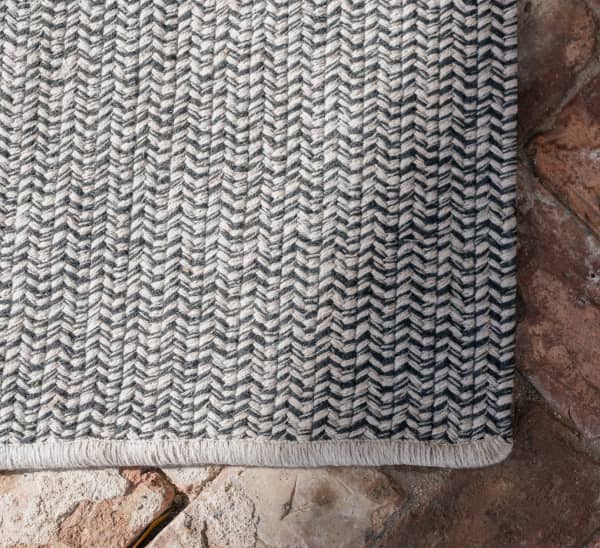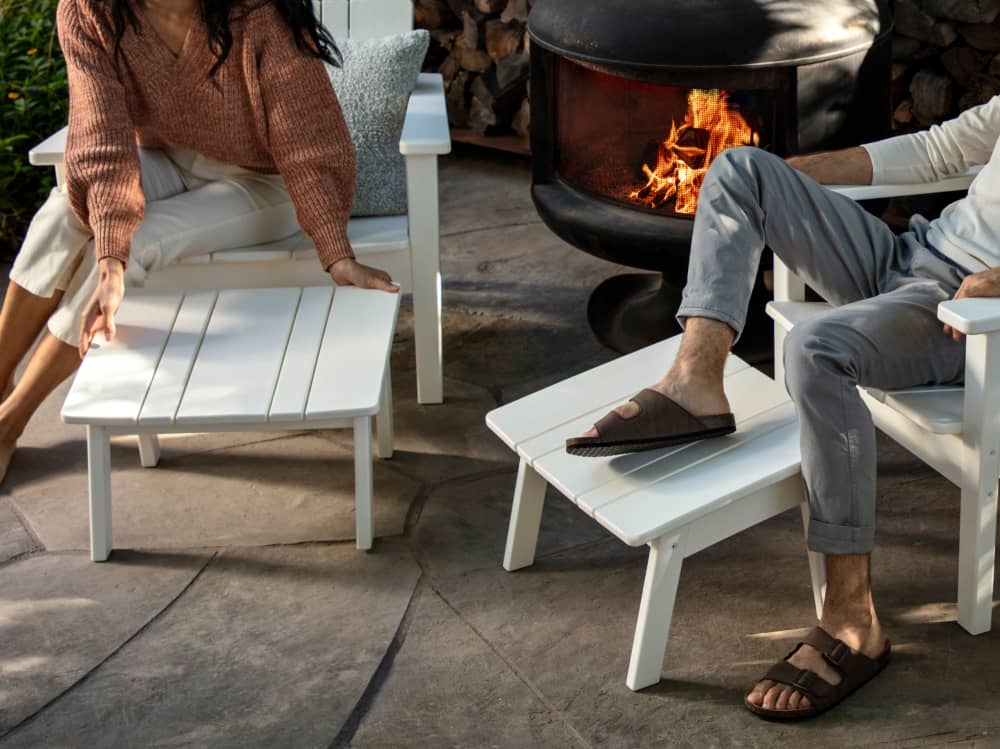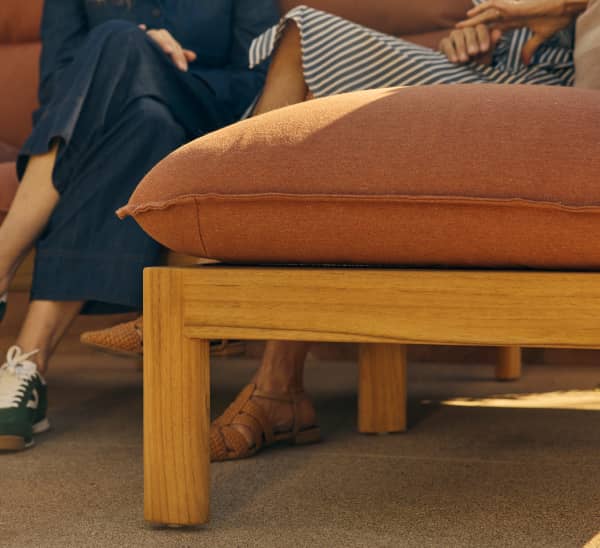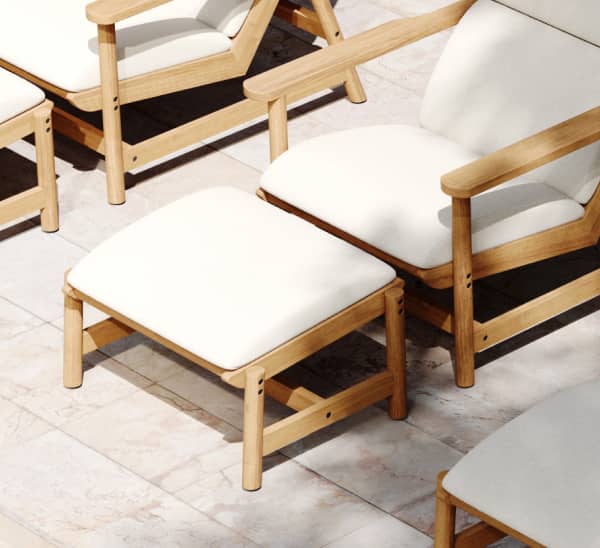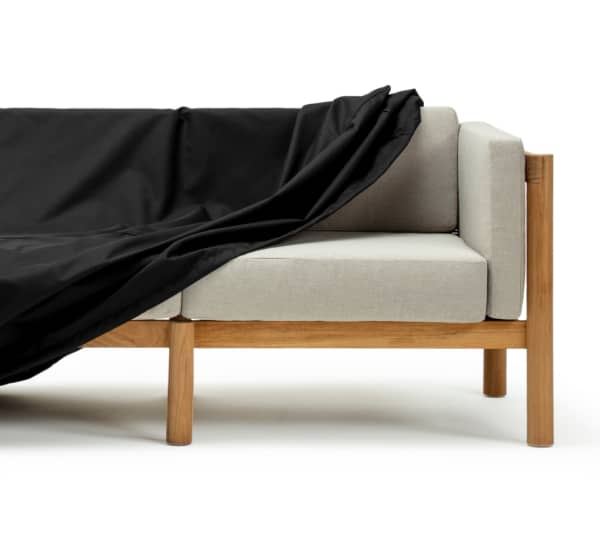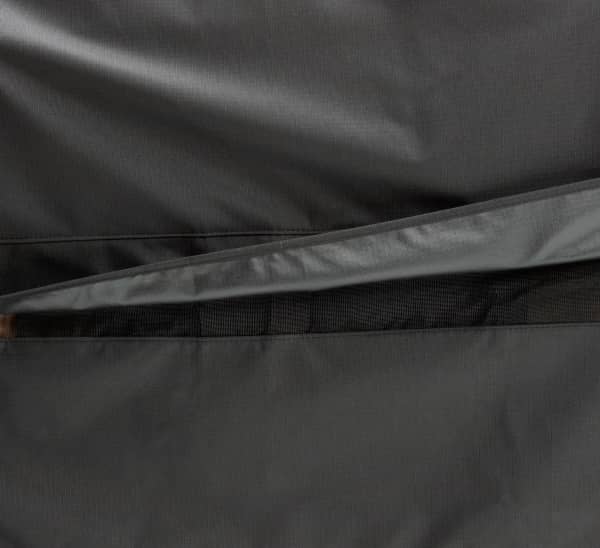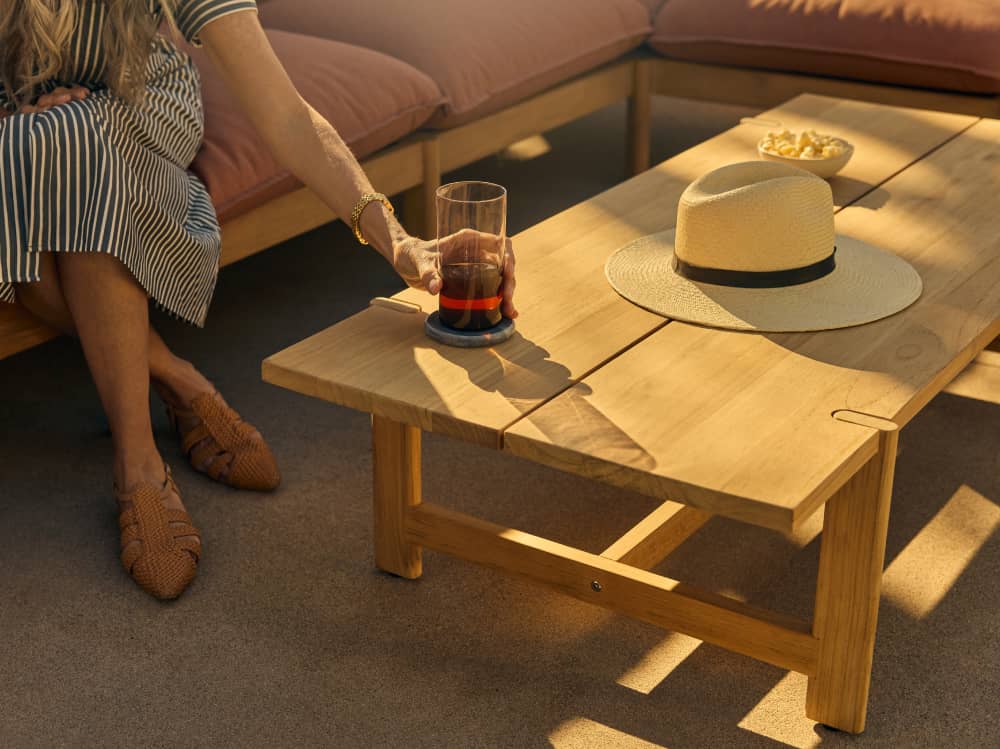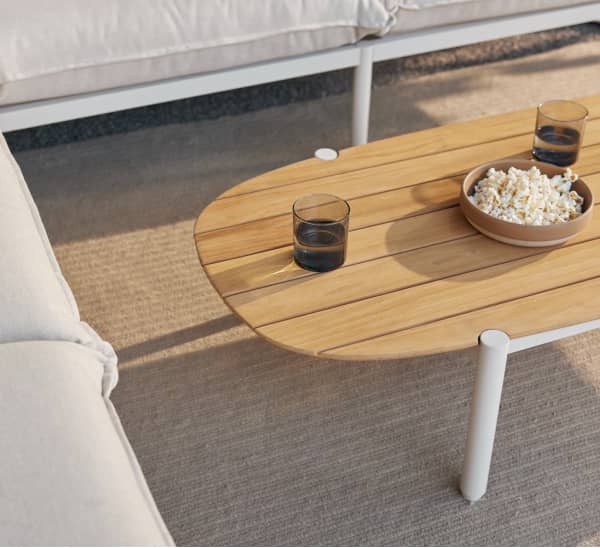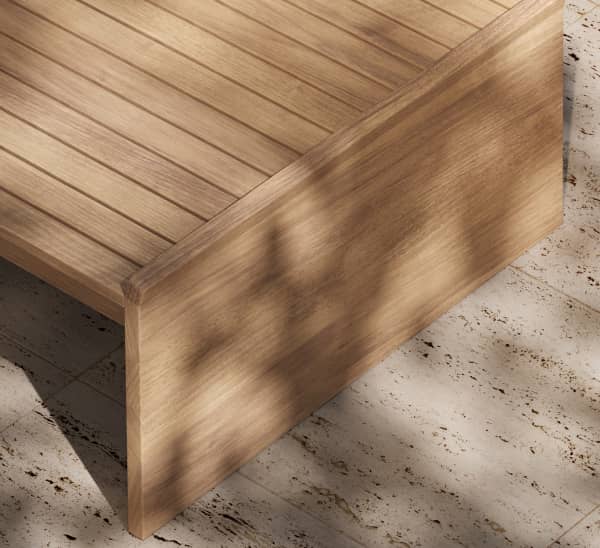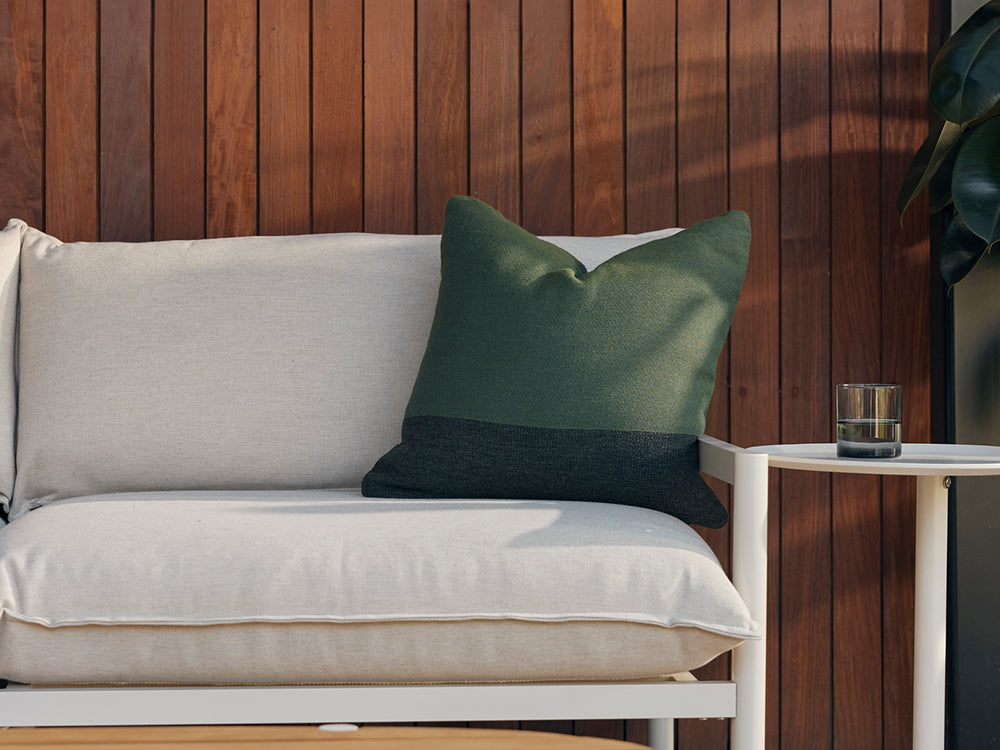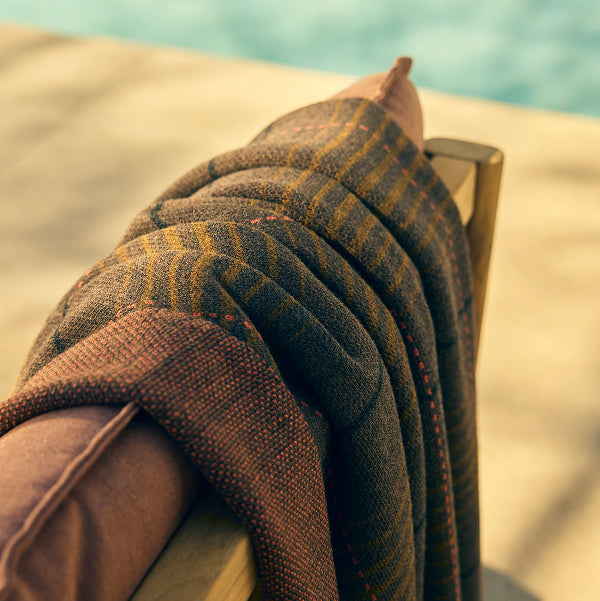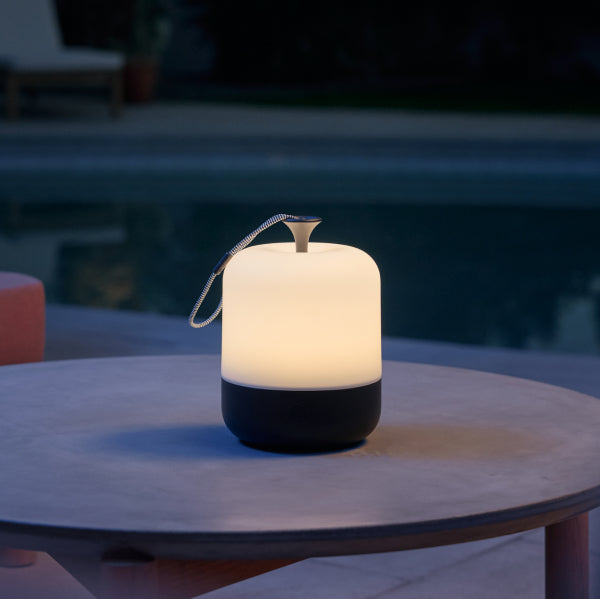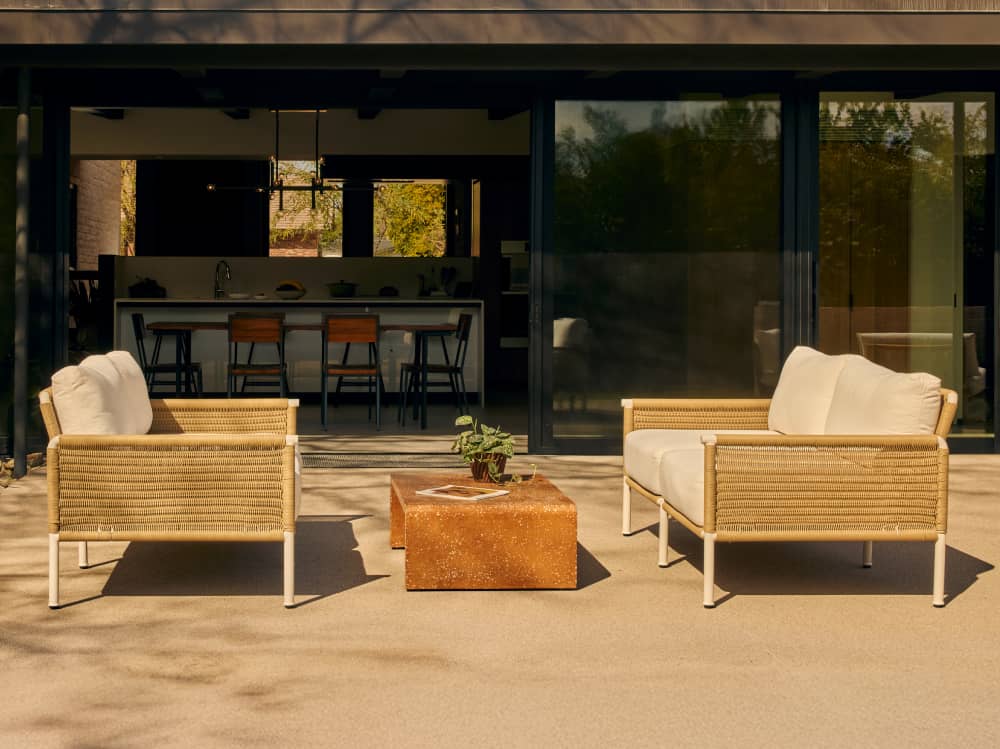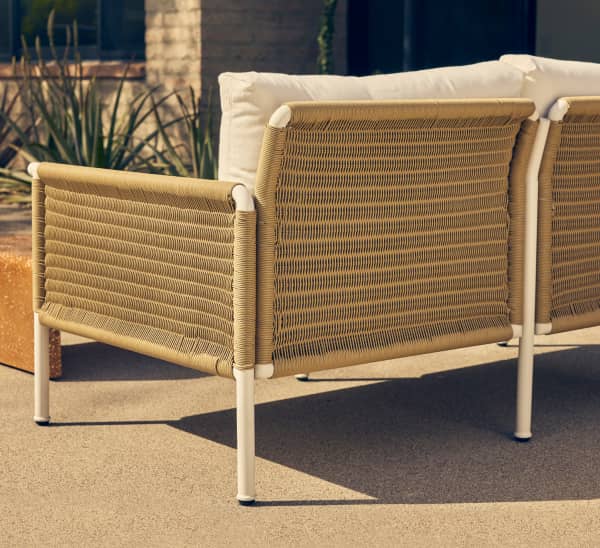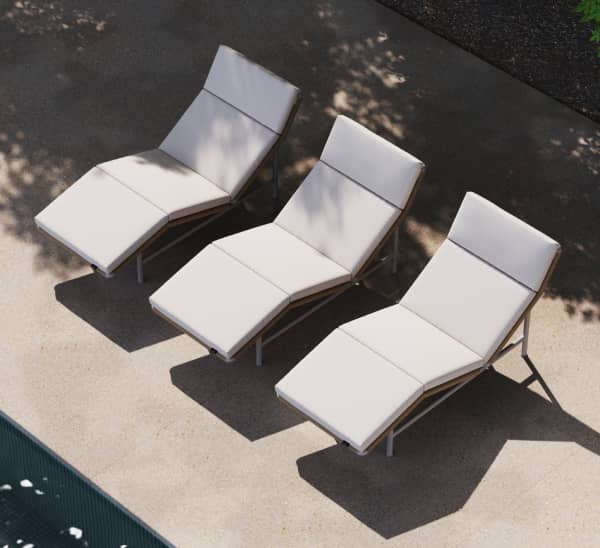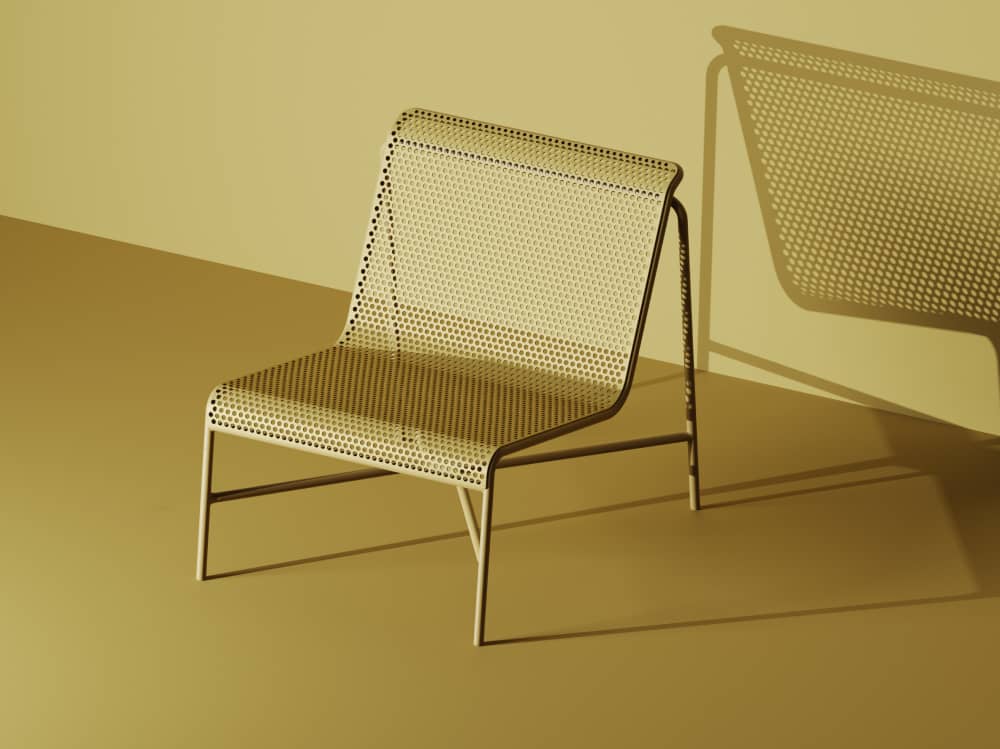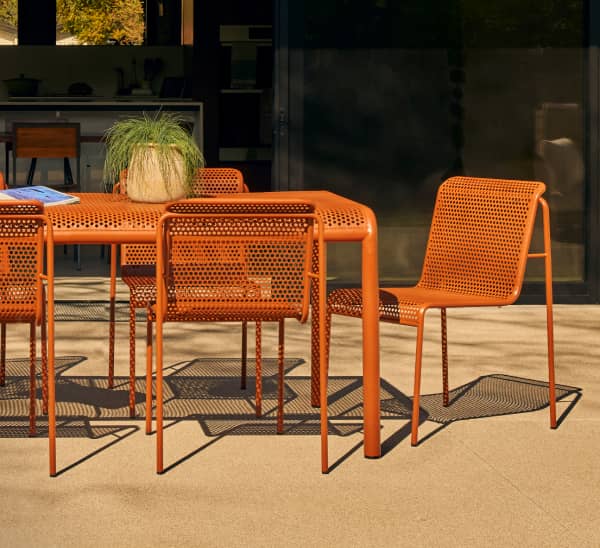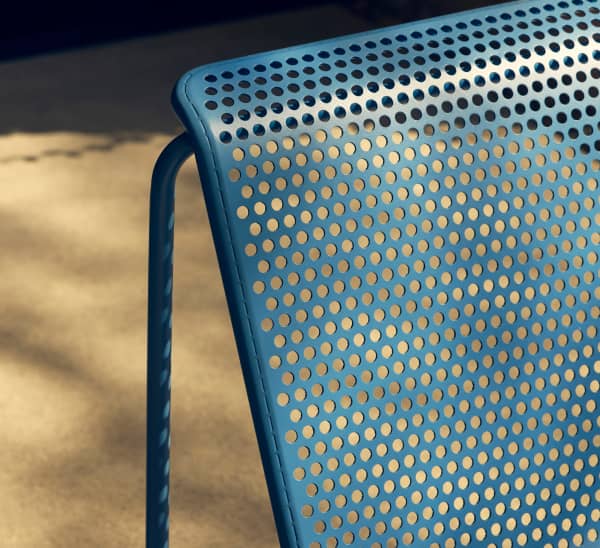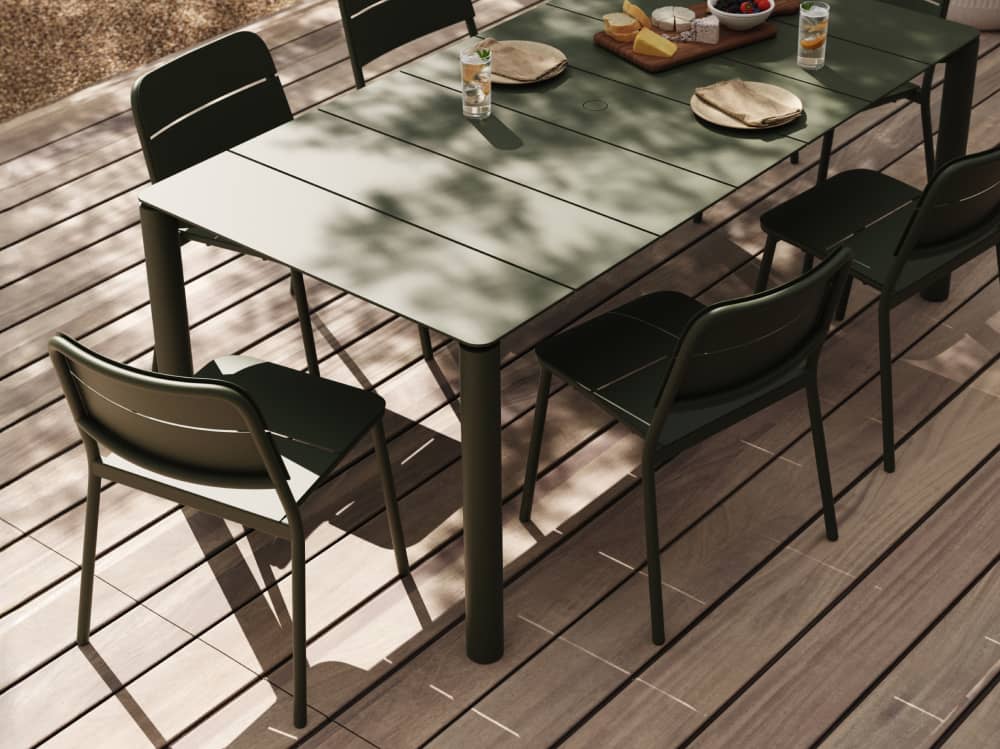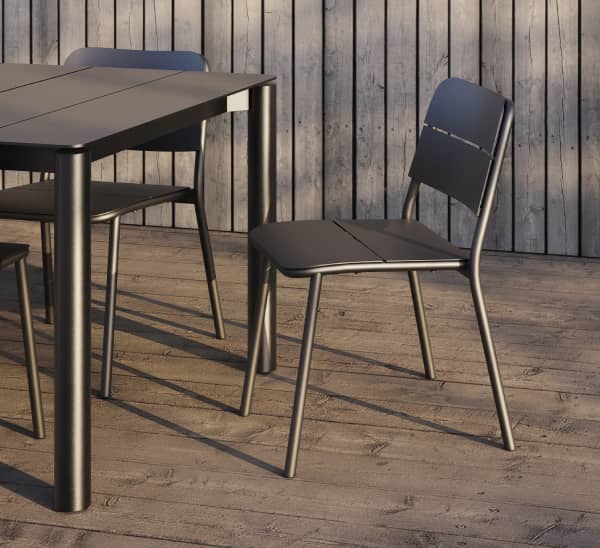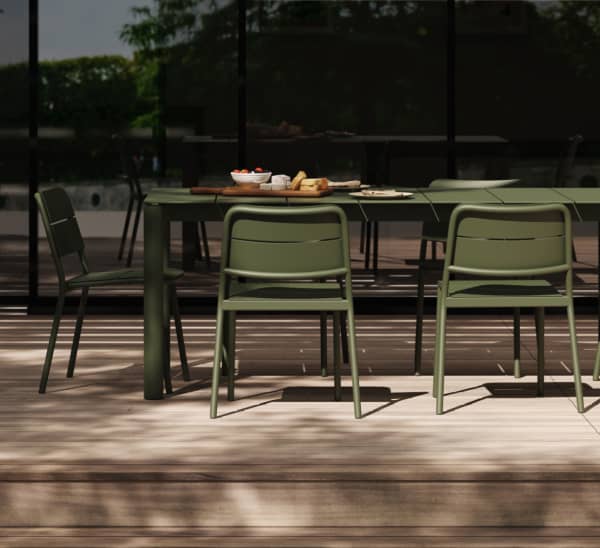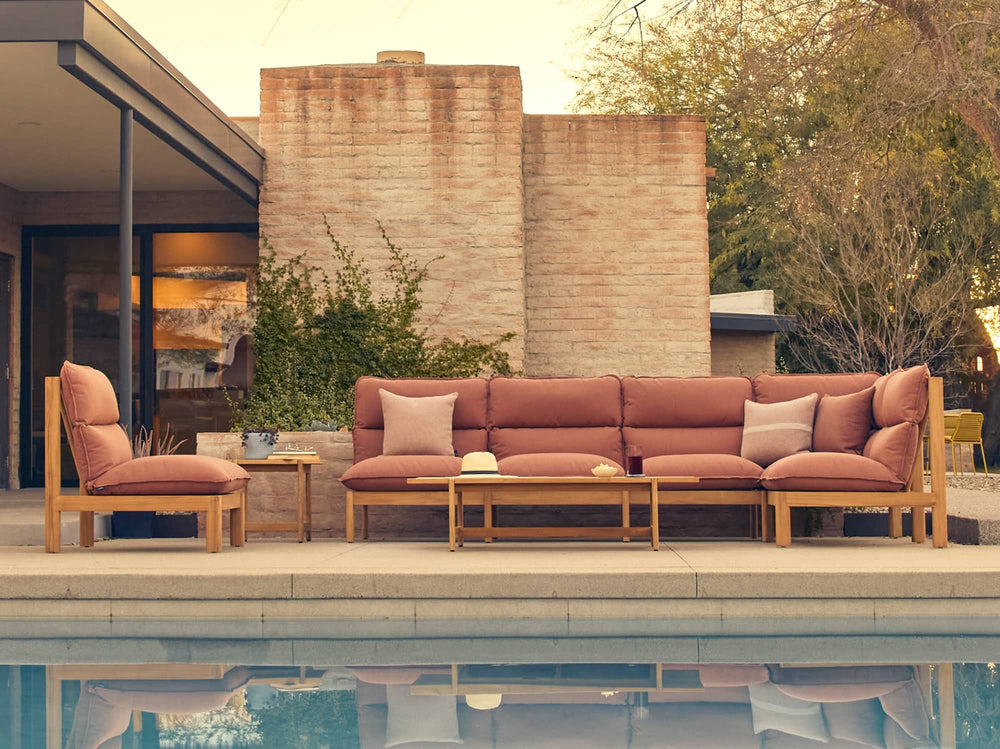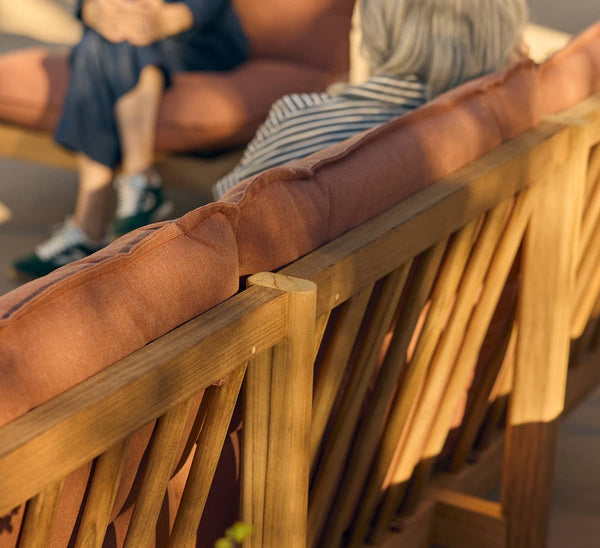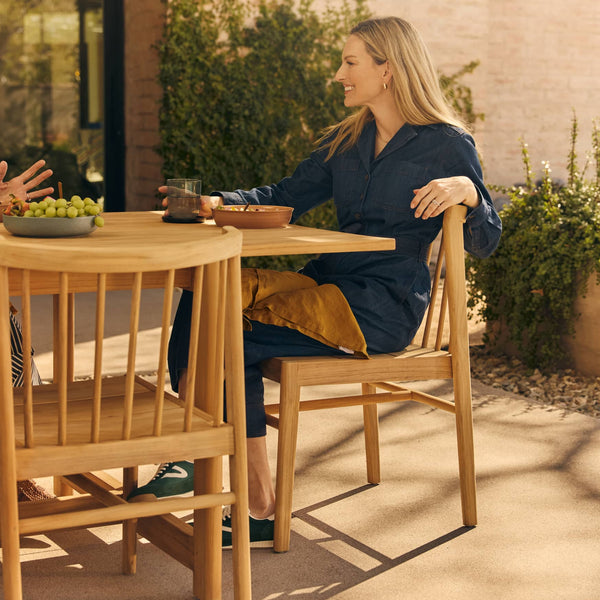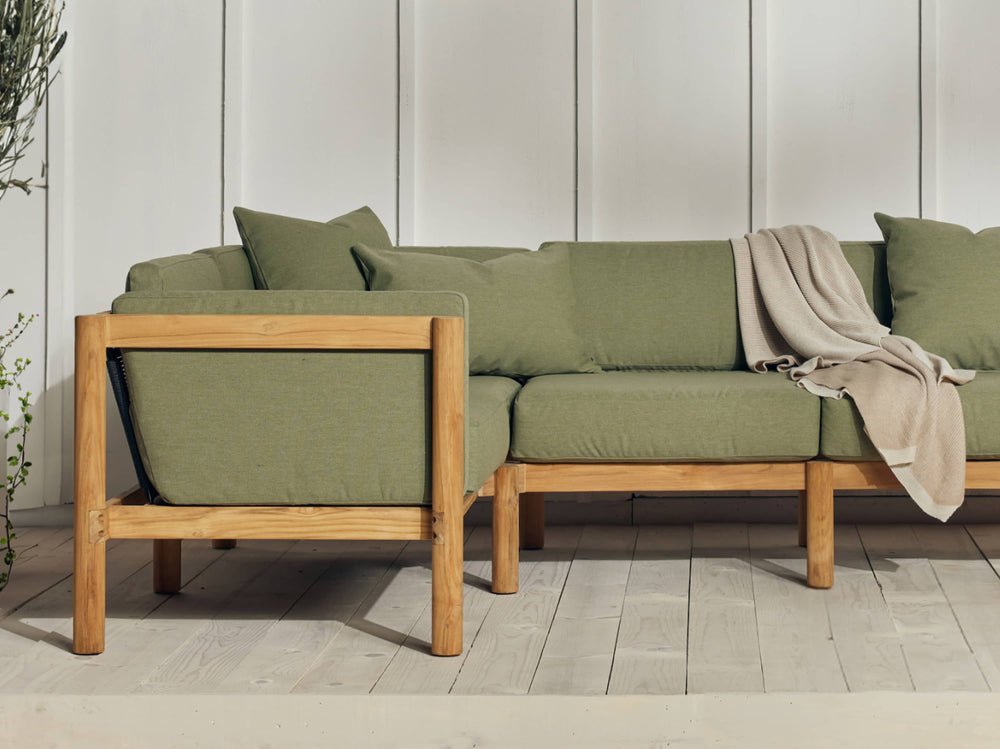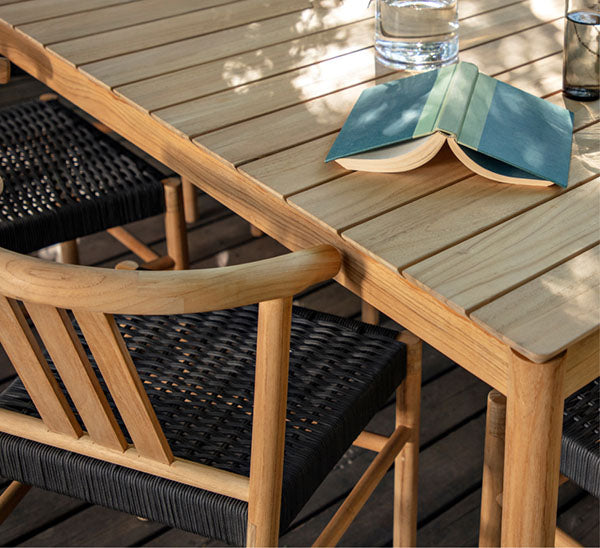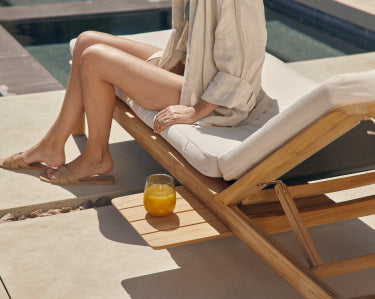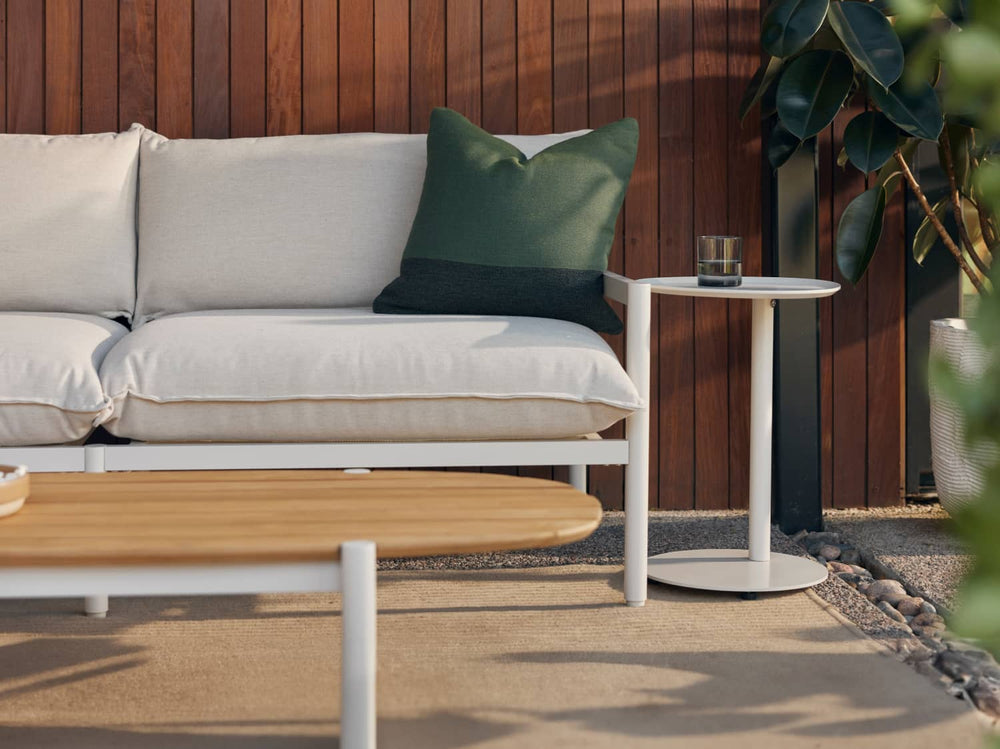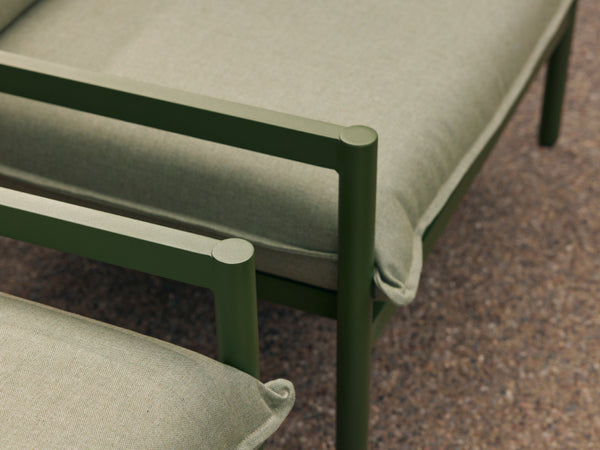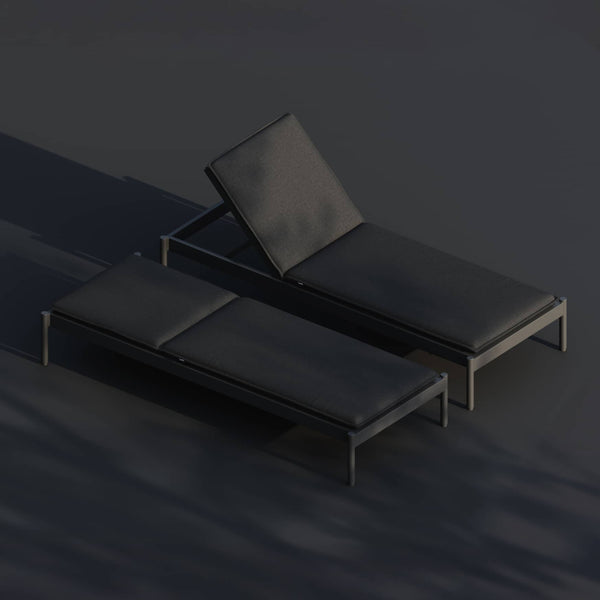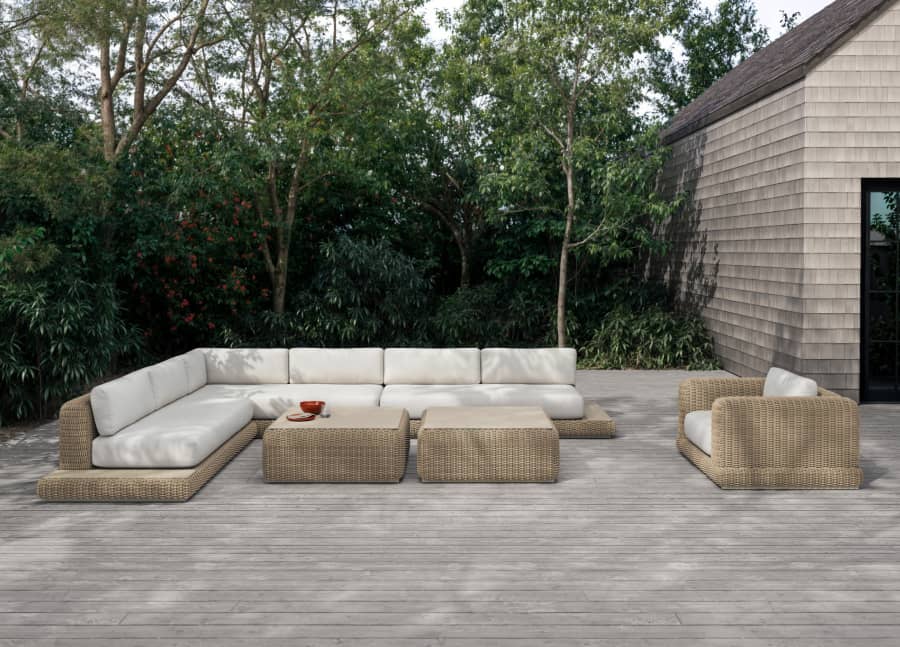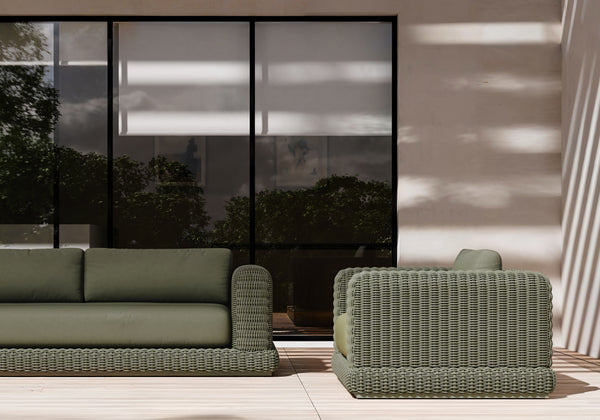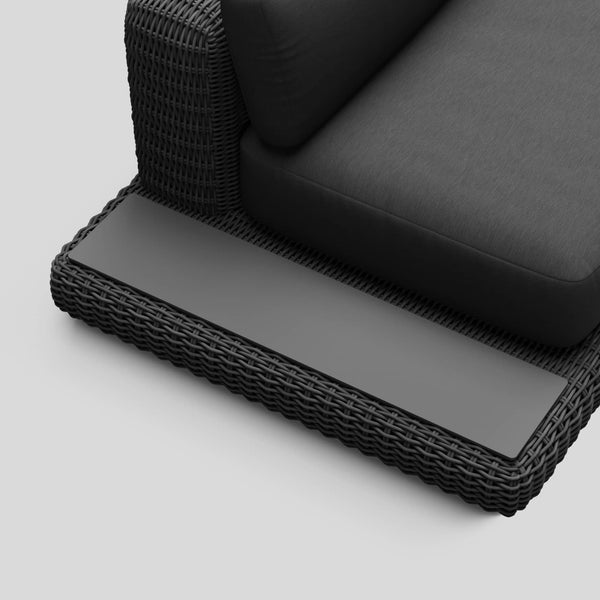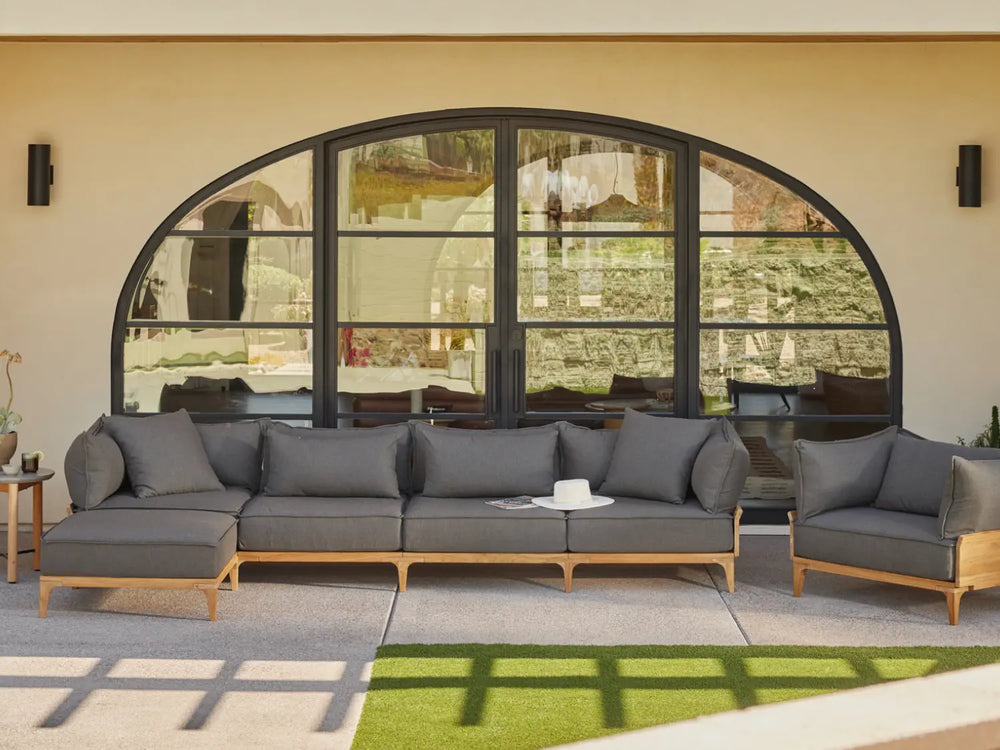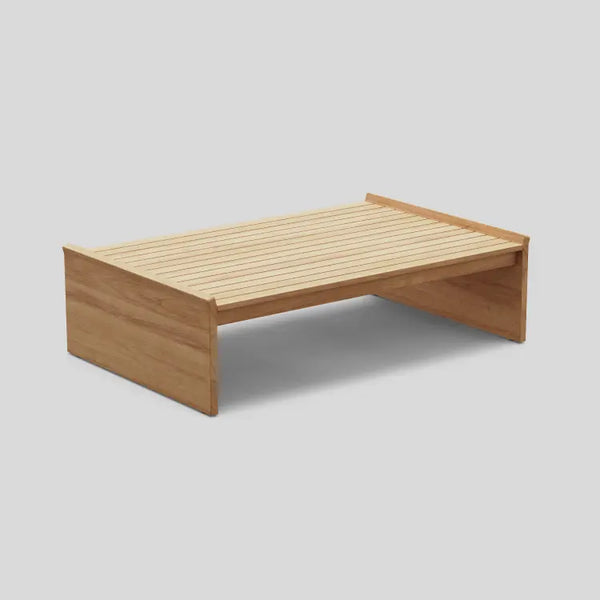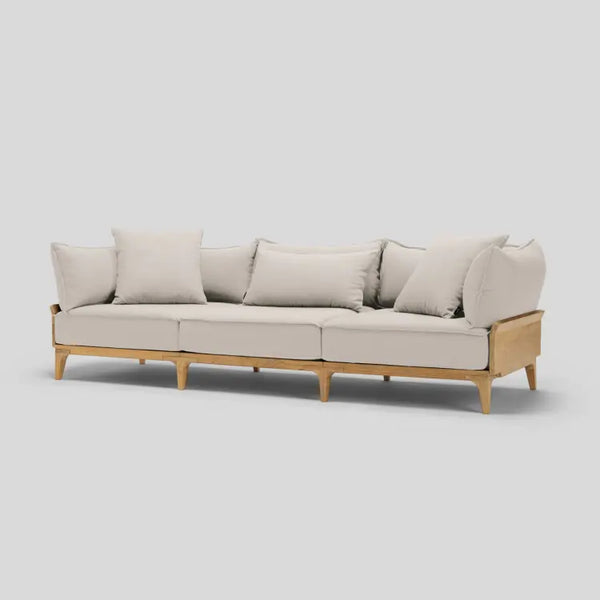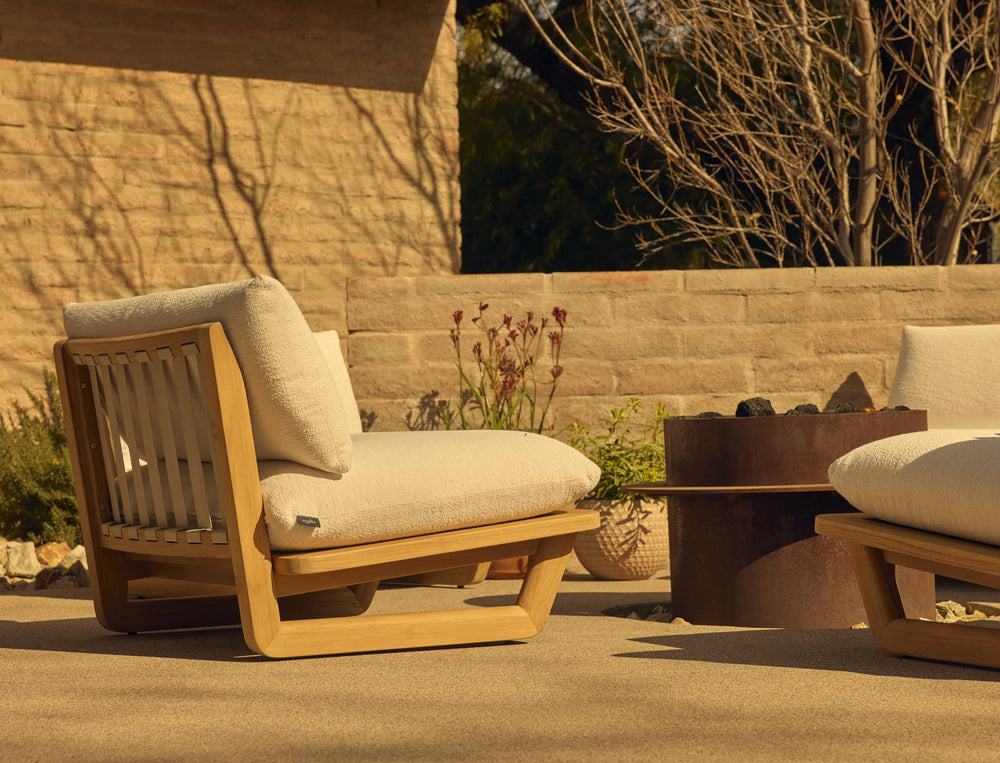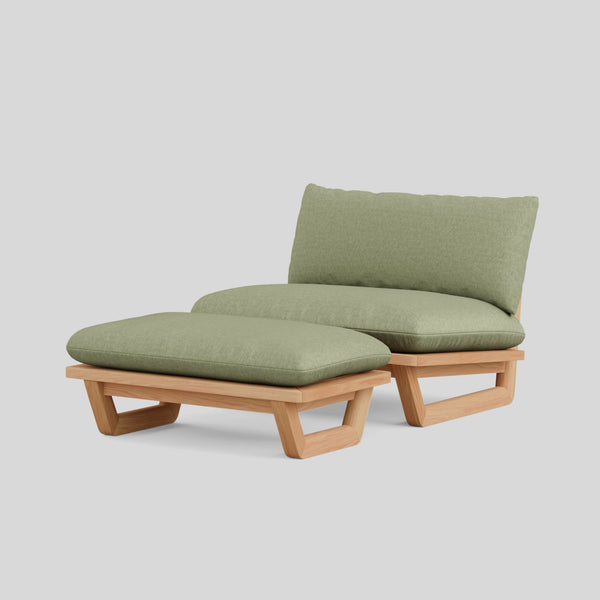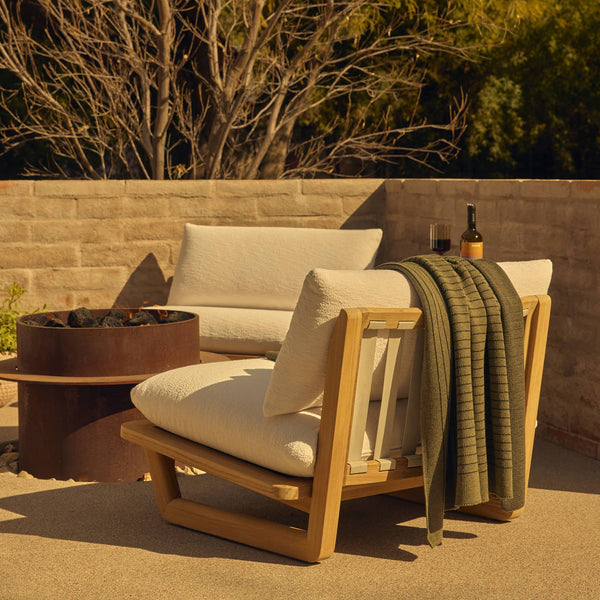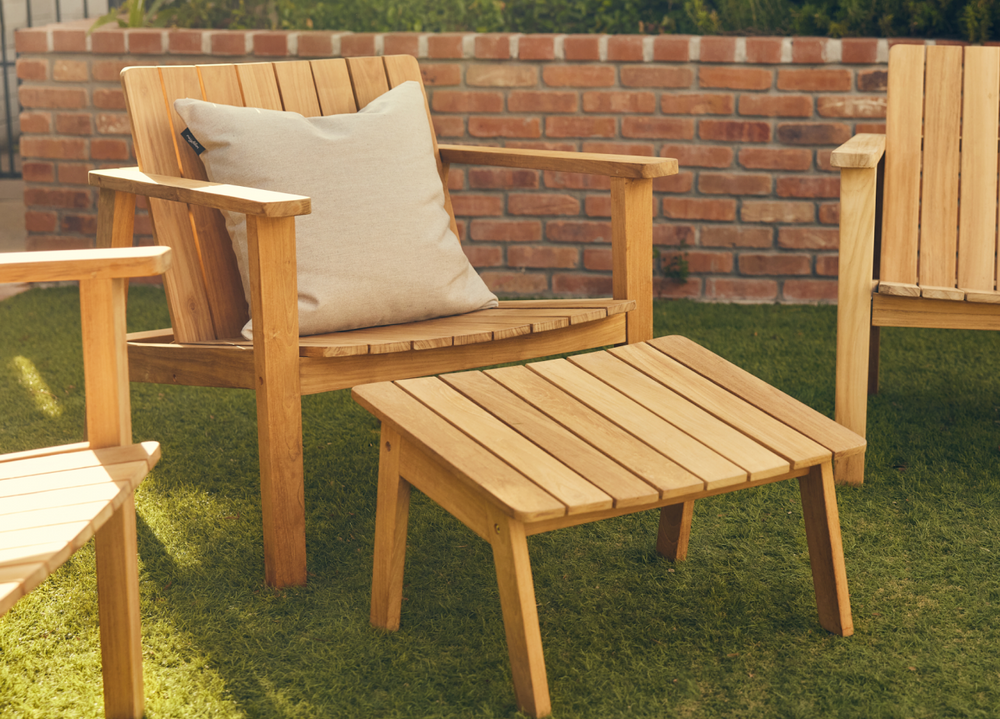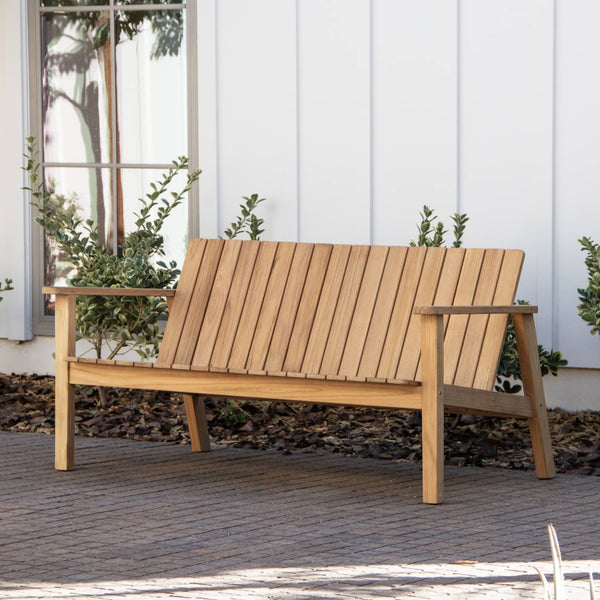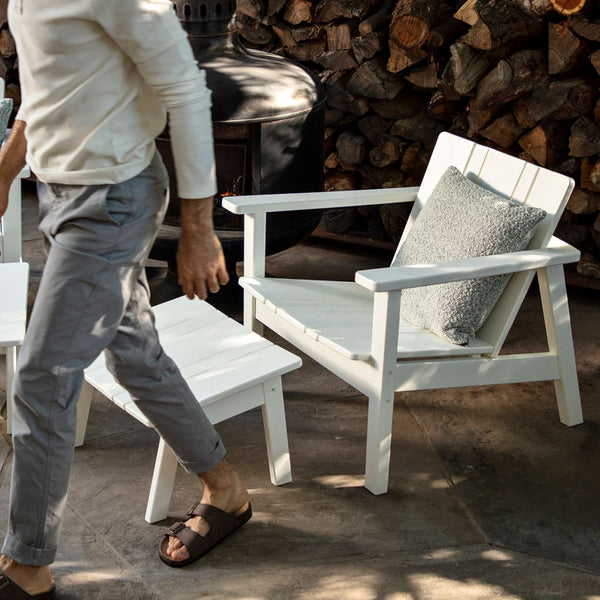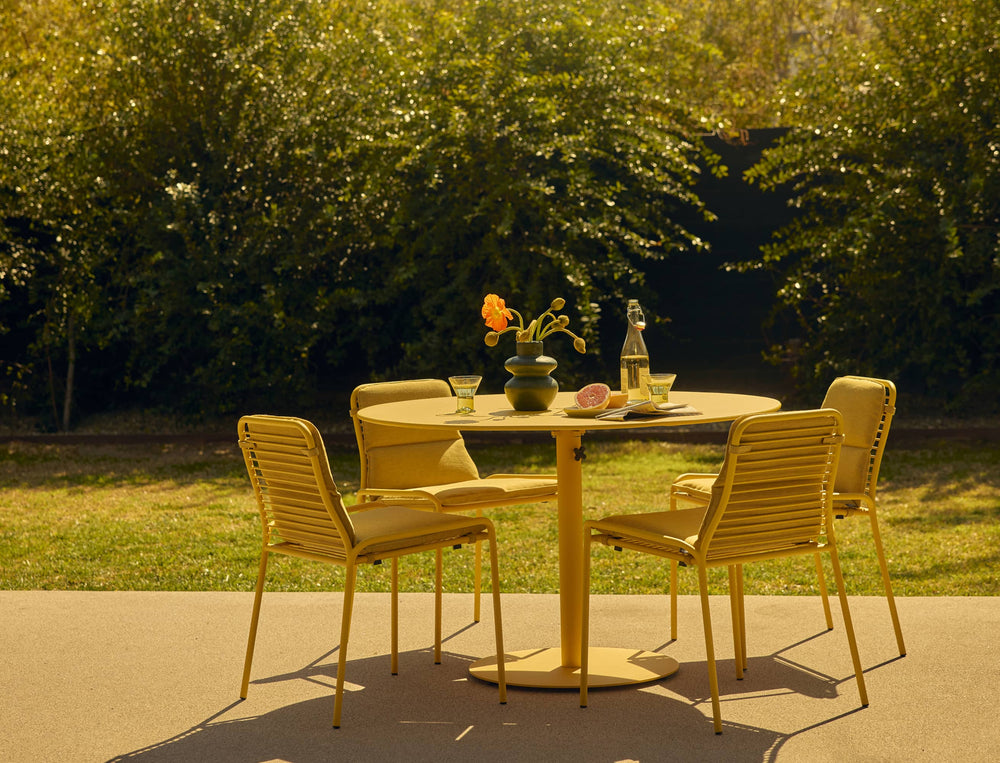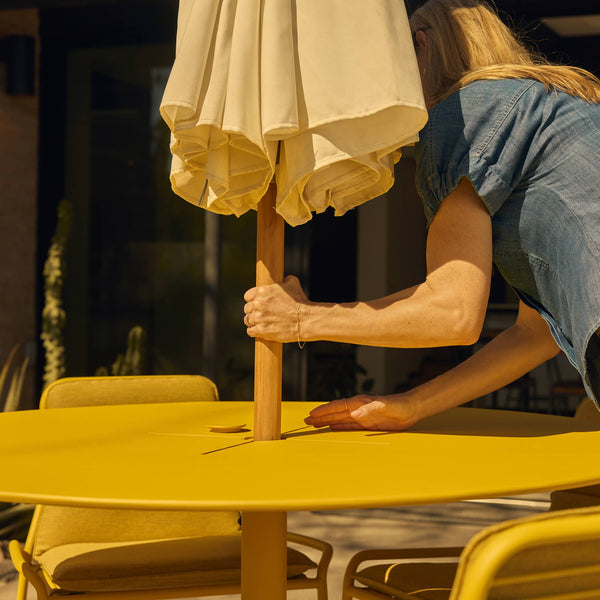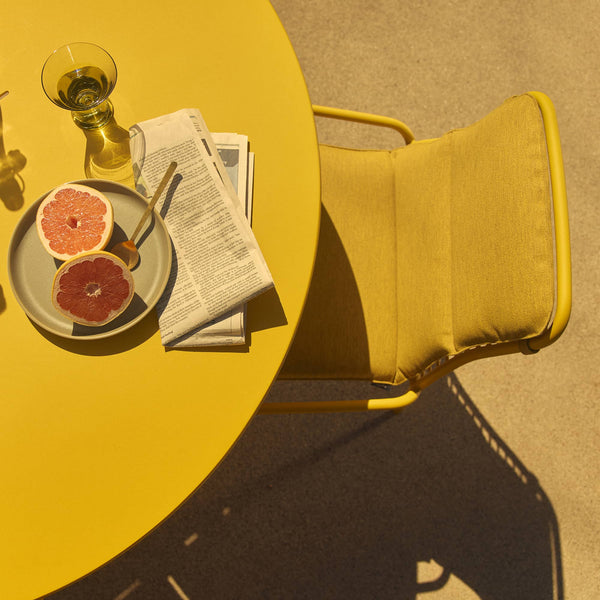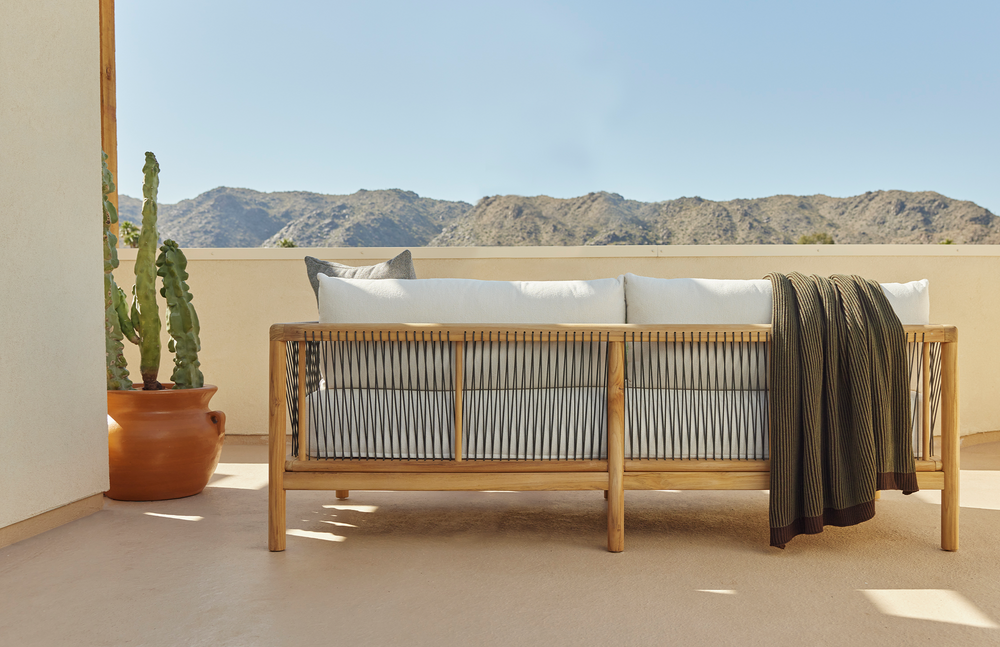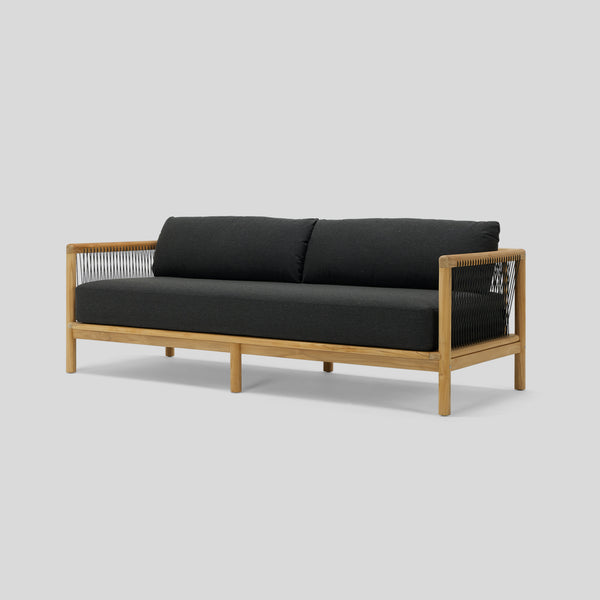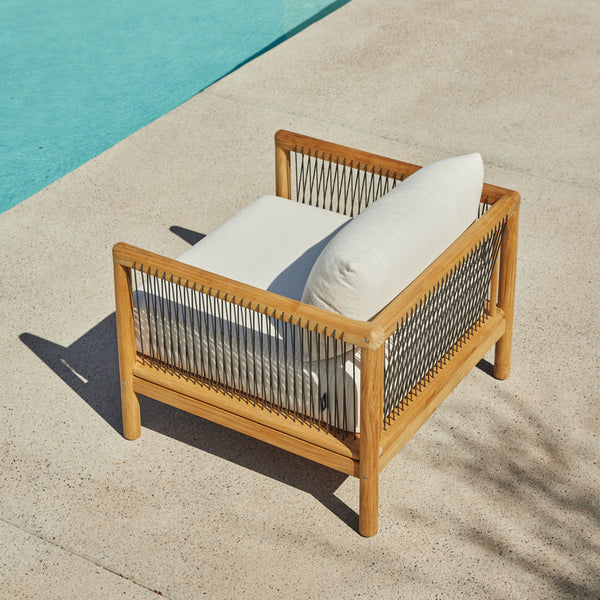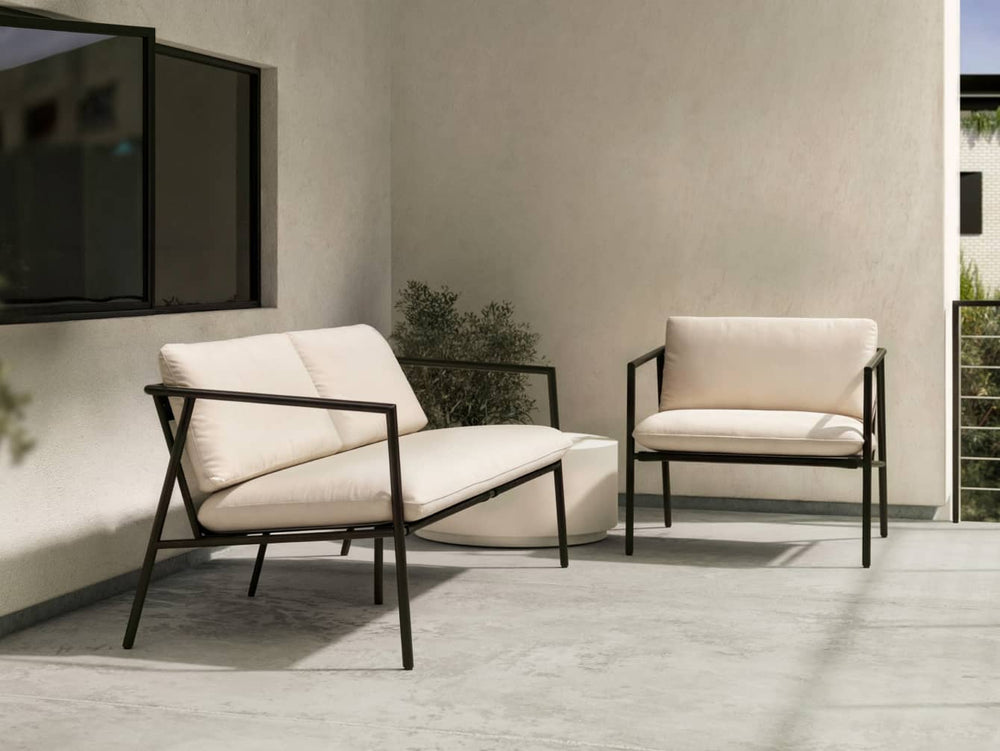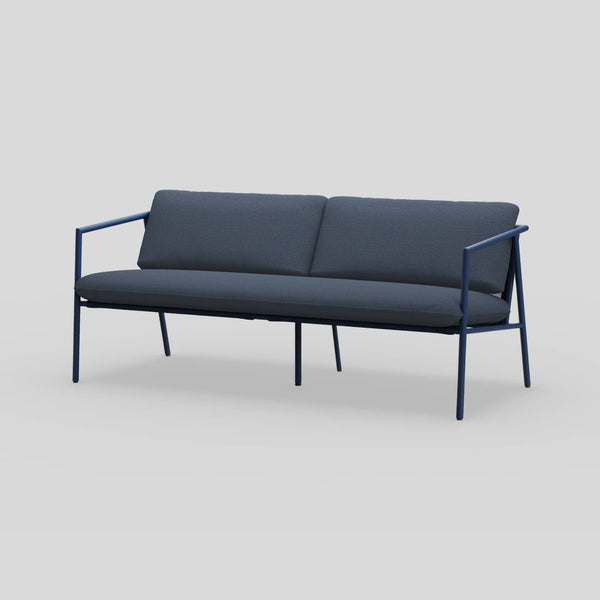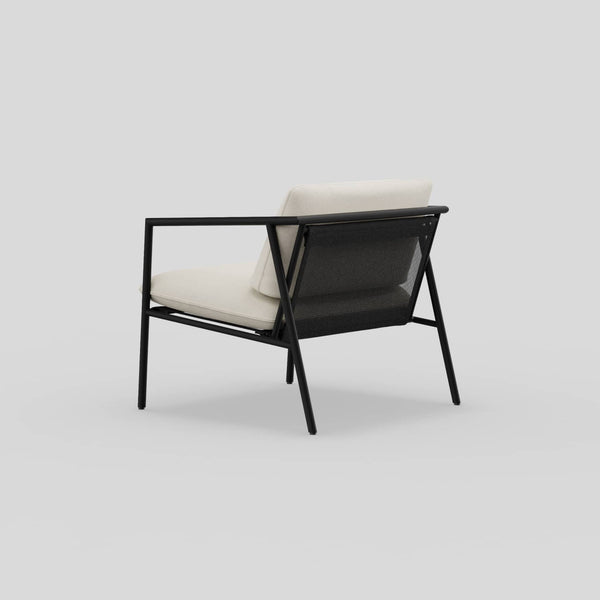Acacia wood vs. teak wood for outdoor furniture
Written by Neighbor Editorial Team | @neighboroutdoor | Opens in a new window. |

Acacia Wood Vs. Teak Wood for Outdoor Furniture
Choosing the right type of wood for your outdoor furniture is key to designing a comfortable outdoor oasis that you can enjoy for years or decades to come. Not all types of wood perform equally in outdoor environments, so it’s important to know the pros, cons, durability and price of each type of wood before making your decision. Two of the most popular kinds of wood used to manufacture patio furniture are acacia wood and teak wood. This is your guide to understanding the different capabilities of acacia wood, teak wood and other common types of wood to inform your decision.
Acacia wood
Acacia wood is a type of hardwood derived from the acacia tree, which is native to tropical, subtropical and warm temperate regions around the world. Acacia wood is particularly abundant in Africa and Australia and has been used for centuries to create furniture pieces that can withstand outdoor elements. The most common types of acacia wood used in outdoor furniture manufacturing come from the Acacia Koa tree (also called Hawaiian Koa) and Acacia Blackwood.
Acacia wood is often used to build flooring, outdoor tables, chairs, benches and living room furniture. Known for its durability, natural beauty and attractive broad grain patterns, acacia wood has a warm coloration that can range from light yellow to dark brown. It features a variety of hues in its grain, giving the wood a natural, unique texture.

Natural oils
Acacia wood has natural oils that provide protection against the elements. These powerful oils make acacia wood resistant to fire damage, and prevent the wood from shrinking, cracking, or splintering over time. They help acacia wood furniture maintain its luster for years without fading. The natural oils in acacia wood also make it naturally resistant to insects and pests, especially termites.
Pros
-
Weather-resistant:
Acacia wood is naturally antimicrobial, water-resistant, and resistant to rot, decay and insect damage. Acacia wood is often used to create cutting boards and other food preparation tools since it is naturally antimicrobial and water-resistant. Due to its origin in the Australian climate and the need to adapt to frequent bush fires, acacia wood is fire resistant. (However, acacia wood is not completely fireproof and is sensitive to extreme temperatures.)
-
Strength:
Acacia wood is smooth to the touch, doesn’t splinter or chip, and is resistant to scratches. This wood is typically treated with a protective finish to increase natural moisture resistance and decay resistance. With considerable strength and the ability to hold its own weight numerous times over, acacia wood is often used to build flooring that won’t get scratched or dent.
-
Eco-friendly:
A naturally-renewable resource, acacia trees grow quickly and can be sustainably replanted and harvested without harming the environment.
Cons
-
Treating acacia wood:
Acacia wood is not as strong as some other woods, specifically teak wood. While acacia wood is water-resistant, it's not waterproof and acacia timber should be treated before it's exposed to climates with a lot of rain or high humidity.
-
Maintenance:
Acacia wood requires more maintenance than other types of outdoor woods. It should be cleaned regularly to help prevent wear and tear, especially around the legs and arms of acacia wood furniture.
-
Durability:
Acacia wood is a highly durable wood in terms of strength. However, there are factors and agents that can still damage acacia wood and compromise its integrity. While acacia wood is fire resistant, it’s still susceptible to warping in high temperatures.
If you have a fireplace in your outdoor living room, it's best to avoid positioning acacia wood furniture in the same area. In direct sunlight, acacia wood tends to soften and is prone to drying out, cracking or warping with exposure to direct sunlight. Acacia wood furniture can also be damaged by certain substances, specifically alcohol, perfumes, silicone-based products and cleaning solutions with any drying agents.
Price
Acacia wood furniture is moderately priced. It is more expensive than normal hardwoods like maple and oak, but more affordable than other exotic hardwoods, like rosewood and mahogany. Due to acacia wood’s availability and the fast-growing nature of acacia trees, acacia wood furniture is generally less pricey than teak wood furniture. Acacia wood furniture varies greatly in price, with acacia outdoor dining tables costing anywhere from $2,000 to $30,000.
Teak wood
Teak wood is an incredibly durable and beautiful type of wood sourced from the teak tree (Tectona grandis), which is native to South and Southeast Asia. Burmese teak is the most widely grown and distributed type of teak wood. Teak trees are found in tropical forests; they can live for over 100 years and grow up to 130 feet.
Due to the extreme weather-resistant properties of teak wood and its natural oils that repel water and resist pests and decay, teak wood was originally used to build ships. Teak wood timber features a long, straight grain and a warm, golden-brown hue, making it an ideal material for designing modern outdoor furniture. Read our guide on how to identify teak wood.

Natural oils
Teak wood has powerful natural oils locked into its grain, found in the cell walls of the wood. These oils, namely tectoquinone, caucho and silica, give the wood a natural shine and make the wood highly resistant to water damage. They also serve as a natural pesticide, which makes the wood uninviting for termites. Teak wood’s high oil content makes the wood more resistant to fungi, pests, mold, mildew, decay and rot than any other type of wood used in outdoor furniture.
Pros
-
Weather-resistant:
Teak wood can withstand all weather conditions, from rain and humidity, to salty coastal regions, to high temperatures and consistent sun. As a tropical hardwood, teak is naturally adapted to warm, moist temperatures and is resistant to warping, cracking and splitting when wet, making it perfect for use in outdoor furniture. The natural oils in teak wood make it resistant to UV rays without requiring additional treatment or oils.
-
Durable:
Teak wood furniture is highly-durable and can last 75 years or more with proper care. It's considered to be one of the most durable woods, even when exposed to extreme climates. The tight, dense grain of teak wood fortifies the wood, making it impervious to water and preventing warping, splitting, degrading or becoming brittle from water damage.
-
Aesthetic:
Teak wood has an attractive golden-brown color with a beautiful, consistent, tight grain pattern that showcases an array of warm tones and hues. Teak wood furniture starts out as a warm, golden color, and over time, develops a silvery-gray patina that gives the wood a distinctive, worn, vintage charm. The patina on teak wood also further protects the wood from wear and tear, which is ideal for high-traffic areas like an outdoor living space. If you prefer the original warm color of teak wood, you can always easily restore your teak wood furniture to reverse the patina.
Cons
-
Affordability:
Due to its beauty, long-lasting durability and specialized weather resistance, teak wood is not the cheapest wood in the outdoor furniture market. Teak wood furniture is typically more expensive than other woods, such as pine, cedar or acacia wood.
-
Sustainability:
Historically, teak has not always been manufactured and harvested with sustainable practices. Teak wood timber is highly sought after, which has led to illegal logging that is both unregulated and destructive to the environment. However, there are ways to ensure that the teak outdoor furniture you’re purchasing is sustainably sourced and harvested. Only purchase from companies that use FSC-certified teak wood.
At Neighbor, all of our teak wood comes from FSC-certified or SVLK-certified forests. FSC-certification ensures that “the forest is being managed in a way that preserves biological diversity and benefits the lives of local people and workers, while ensuring it sustains economic viability.” Sustainability is truly at the core of everything we do.
Price
Teak wood furniture can be relatively costly and is known as the gold standard, high-end outdoor furniture option. Outdoor furniture made from teak wood may not be within everyone’s budget. When considering the price of teak wood furniture, it’s important to remember that purchasing teak outdoor furniture is an investment. While teak wood furniture can be more costly upfront, you won’t have to replace your outdoor furniture setup any time in the near future.
Like acacia wood furniture, teak wood furniture varies greatly in price. A teak wood outdoor sectional, for example, can range anywhere from $2,000 to $30,000.
Acacia vs. Teak wood
Still on the fence between acacia wood or teak wood for your outdoor furniture? We’ll explore key differences between the two woods to help you make an informed decision.

Climate
Consider the climate in your area. Are you faced with harsh weather conditions, extremely high temperatures or high rainfall? If your backyard, patio or balcony is in an area that receives a lot of moisture, acacia wood furniture may not be the best choice. Acacia wood furniture is prone to crack, warp and become brittle when exposed to moisture or too high of heats. In this case, teak wood furniture is ideal.
If your outdoor space is covered or screened in, and you don’t face extreme weather conditions at any time of year, acacia wood furniture may be a safe bet. In any climate, teak wood will stand strong without losing its strength.
Janka Hardness
The Janka Hardness scale is a tool used to measure the relative hardness of different types of wood. Harder woods with a higher Janka score are more durable and can withstand more wear and tear, while softer words with a lower score are more susceptible to damage.
When it comes to teak wood vs acacia wood, the Janka hardness of teak wood is around 2,330. The Janka hardness of acacia wood can be anywhere from 1,100 to 4,270, depending on the type of acacia tree. In terms of hardness, teak wood and acacia wood rank about the same.
Appearance
Both acacia wood and teak wood produce beautiful timber and make for attractive outdoor furniture. Acacia wood is diverse in color with more variations in grain pattern, and generally takes on more of a reddish-brown to darker brown color. Grain patterns can also be curved.
Teak wood features a more consistent, fine grain pattern with light, golden hues and is known for adding a more modern feel to furniture. In terms of acacia vs teak aesthetic, it comes down to preference. Teak wood is overall more subtle and natural-looking, which can make teak furniture more desirable for a contemporary outdoor living design.
Longevity
Because teak wood can resist any type of climate or weather condition, teak wood outdoor furniture can last a lot longer than acacia wood outdoor furniture. Over time, outdoor furniture made of acacia wood will likely need to be replaced as it loses strength and responds to the elements.
Teak wood, on the other hand, has been used for shipbuilding and therefore has proven capability in repelling water and resisting damage in the harshest conditions.
Other types of wood for outdoor furniture
Acacia wood and teak wood are two of the most popular choices for manufacturing outdoor furniture, but they aren’t the only choices. Other types of wood, like cedar, mahogany, white oak and redwood are often used in outdoor furniture design and are worth considering.

Eucalyptus
Eucalyptus wood is a light-colored wood that can range from pale yellow-brown to a light reddish-brown with a fine, even grain. This wood comes from Eucalyptus trees that are primarily found in Australia and parts of South America. Known for its strength, hardness, water-resistance, rot-resistance and stability, eucalyptus wood is a popular choice in outdoor furniture design. Eucalyptus outdoor furniture can last up to 25 years with proper care.
Cedar
Cedar is a softwood that is lightweight and has a reddish-brown appearance. It’s naturally resistant to rot and decay, and repels moisture and insects. Cedar is usually sourced from the northern U.S. and Canada. It is known for its durability and can last for decades with proper maintenance.
Mahogany
Mahogany is a tight-grained hardwood with a deep reddish-brown color and is well-known for its strength and rich beauty. Mahogany is generally sourced from Central America, India, and Africa.
Durable and resistant to water, decay and rot, mahogany can last up to 40 years outdoors with proper care. While mahogany is weather-resistant, it should not be left in direct sunlight. Sunlight causes the wood to fade and lose its rich color rather quickly.
Redwood
Redwood is a popular softwood with a reddish-brown appearance. The natural oils in redwood make it resistant to rot, decay, moisture, and insects. Redwood is well-suited for the outdoors. Redwood is usually sourced from the western United States, is known for its durability and can last anywhere from 10 to 30 years with proper maintenance.
Ipe
Ipe wood is a durable and beautiful tropical hardwood that’s naturally resistant to rot, decay, and insects. Its distinctive color ranges from reddish-brown to dark brown, and it’s incredibly strong, making it ideal for high-traffic outdoor areas. Ipe wood also requires little maintenance beyond occasional cleaning and oiling, making it a great choice for long-lasting outdoor furniture and decking.
Teak wood is superior in outdoor furniture
At Neighbor, we believe teak wood is superior to all other woods when it comes to outdoor furniture design. With a natural, modern beauty, a soft, inviting texture, consistent and tight wood grains that complement minimalistic design, and long-lasting strength and durability unparalleled by other woods, teak makes for the highest quality of outdoor furniture.
We’re proud to use only sustainably-sourced teak wood from SVLK and FSC-certified forests. All of our teak wood outdoor sectionals, sofas, chairs, dining tables and coffee tables feature sustainably-harvested, real teak wood with stainless steel, marine-grade hardware to ensure strength and longevity.
Explore our teak outdoor furniture buying guide. Read reviews from happy customers. Shop our collection of quality wood furniture made for a long life outdoors, and start designing your perfect outdoor space with beautiful wooden furniture today.

